Discover the secrets of the world's newest ghost towns
Abandoned settlements frozen in time
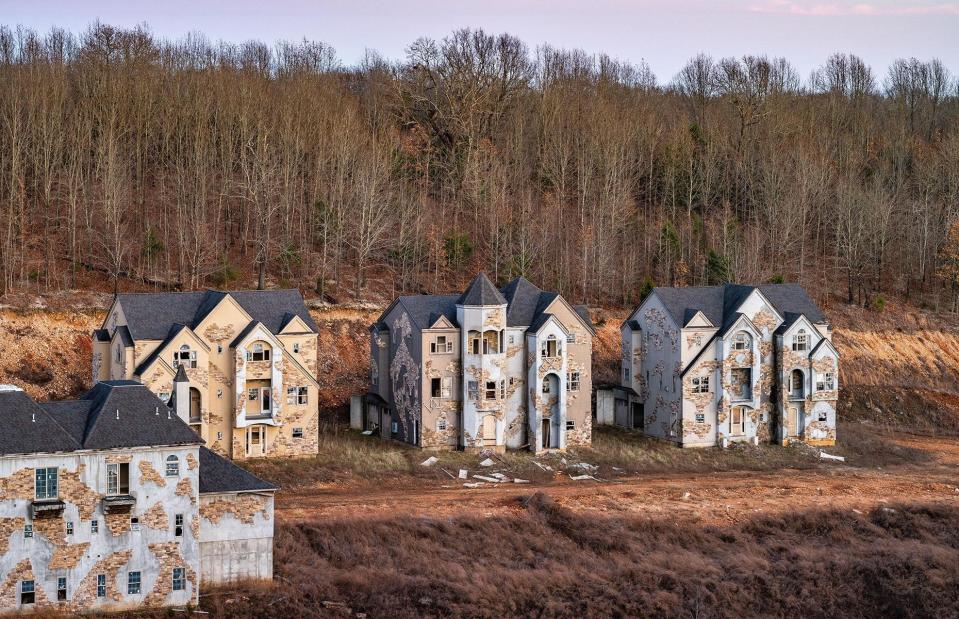
Serhii Chrucky / Alamy Stock Photo
Born from big ambitions, these modern-day towns are now lifeless landmarks, built to accommodate booming populations before misfortune or misjudgment rendered them obsolete. From rows of abandoned McMansions to UFO-shaped holiday homes that failed to find buyers, discover the deserted settlements that fell by the wayside.
Read on to take a tour of these fascinating empty outposts...
Forest City, Johor, Malaysia

MOHD RASFAN / AFP via Getty Images
Built across a chain of four artificial islands, Forest City was once touted as a futuristic new eco-community. Plans for the $100 billion (£79bn) city on the coastline of southern Malaysia were reportedly announced in 2016 by major Chinese property developer Country Garden. China's property market was booming at the time and according to the BBC, the development was aimed at affluent Chinese buyers searching for a second home abroad.
Marketed as a "dream paradise for all mankind", the settlement was intended to occupy over 7,400 acres, featuring high-end residences, restaurants, bars, a golf course, a waterpark and commercial offices. It was designed to accommodate almost one million people, yet its streets now stand desolate.
Forest City, Johor, Malaysia

Sebastian Castelier / Shutterstock
Pictured here, rows of cookie-cutter villas sit in the shadow of Forest City's high-rise towers. Many seem to still be under construction, while signs of neglect are apparent from the roof terraces, some of which are flooded and mouldering.
Unfortunately, China's property crisis in 2021 couldn't have come at a worse time for the fledgling city. Country Garden, once a behemoth of China's housing sector, now reportedly faces debts of $200 billion (£157bn). While the beleaguered developers told the BBC that they were "optimistic" that Forest City would be completed, that likelihood appears to be dwindling. Country Garden is now in the midst of a liquidation hearing to decide the future of the company.
Forest City, Johor, Malaysia
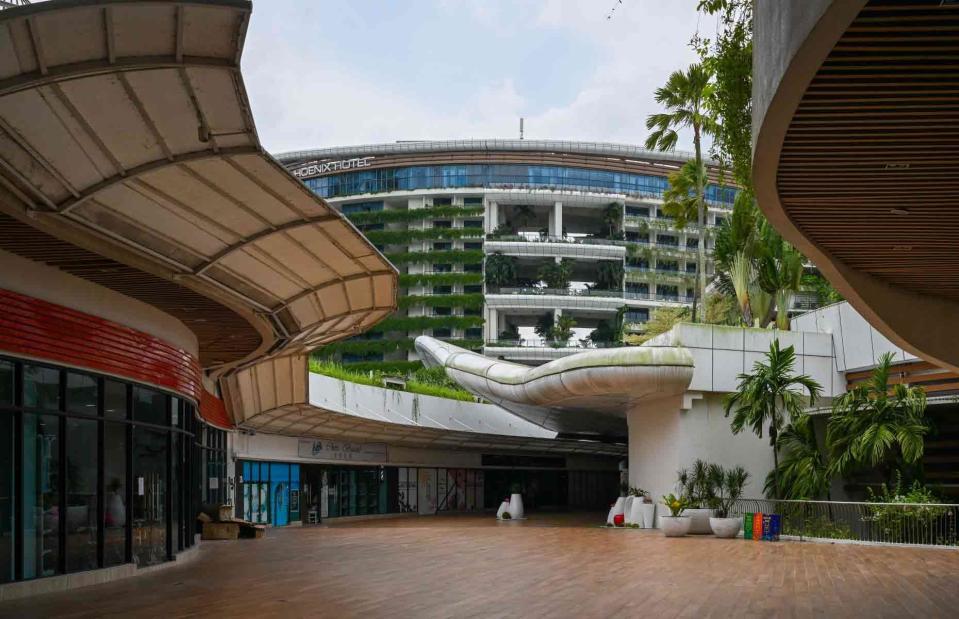
MOHD RASFAN / AFP via Getty Images
As of the end of 2023, only 15% of the metropolis was built, while around 1% of the development was reportedly occupied.
The BBC spoke to Nazmi Hanafiah, an IT engineer who rented an apartment in Forest City for six months, before abandoning the settlement, which he described as a "ghost town".
"I didn't care about my deposit, I didn't care about the money. I just had to get out," he said. "It's lonely around here – it's just you and your thoughts."
Forest City, Johor, Malaysia
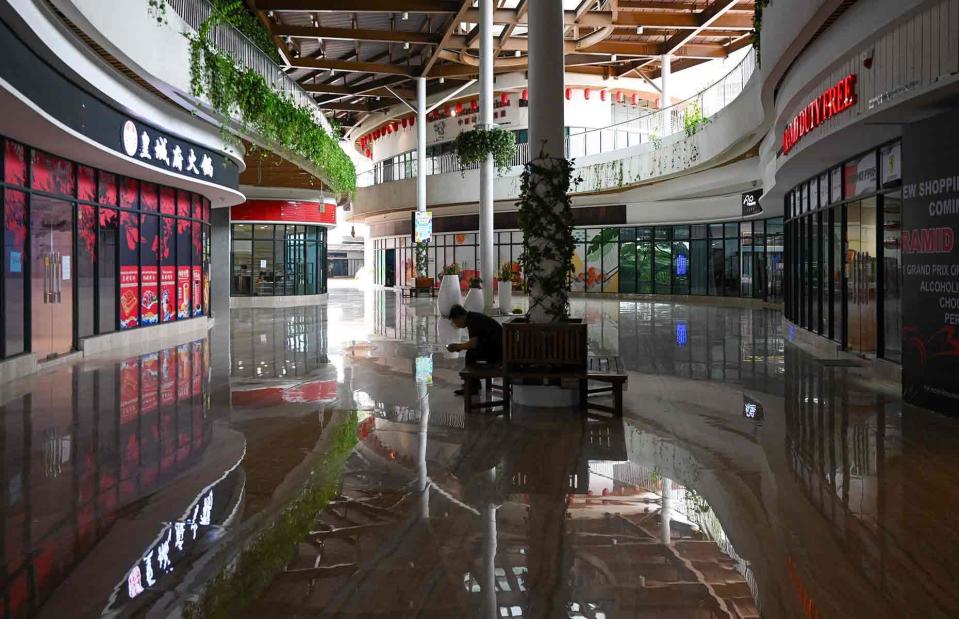
MOHD RASFAN/AFP via Getty Images
In the deserted shopping mall, many of the stores and eateries are shuttered, some having never opened their doors in the first place. Forest City's duty-free status was intended to draw in punters, yet the anticipated crowds still haven't materialised.
The future of Forest City appears to be hanging in the balance. If Country Garden goes into liquidation, it's unclear who, if anyone, will take on the mantle of finishing the enormous project. Could this metropolis, once advertised as a "green living paradise", be reduced to a failed utopia? Only time will tell.
State Guest Mansions, Shenyang, China
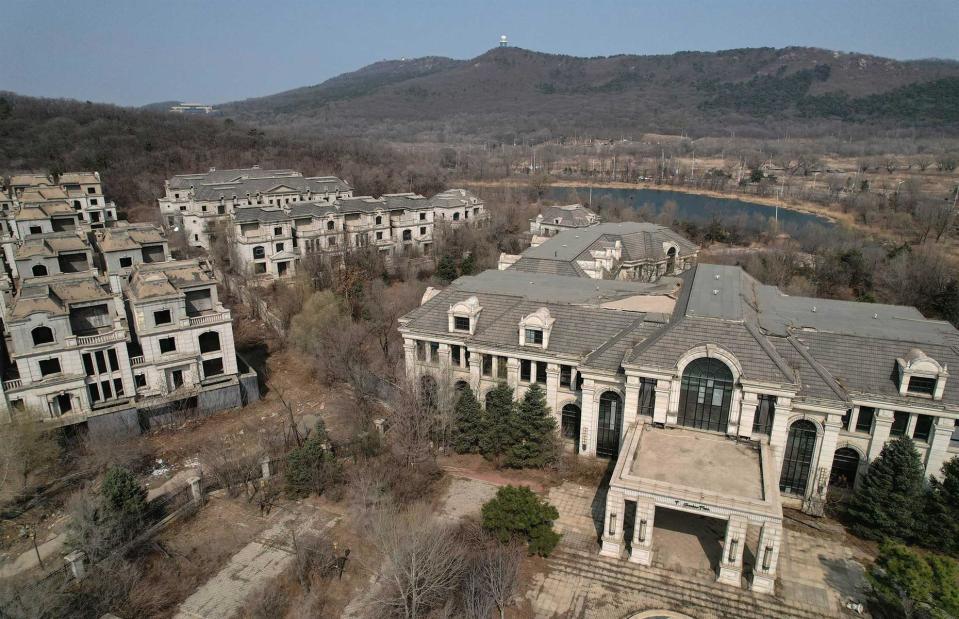
JADE GAO / AFP via Getty Images
In 2010, Chinese property giant Greenland Group began building State Guest Mansions, an upmarket neighbourhood of 260 lavish homes complete with luxury amenities, designed for China's millionaires. But just two years later, the elaborate plans were shelved and these European-style châteaux were left to rot.
“These [homes] would have sold for millions – but the rich haven’t even bought one of them,” a local farmer told AFP. “They weren’t built for ordinary people.”
State Guest Mansions, Shenyang, China

JADE GAO / AFP via Getty Images
As we can see from these photos taken in March 2023, the project now lies in ruins. From the enormous chandeliers to the marble floors and fluted columns, it's evident that an enormous amount of work went into creating the now eerie abandoned villas.
At the time, China's economy and real estate sector was growing, but with President Xi Jinping's rise to power in 2012, everything changed. An effort was made to put an end to government corruption and consequently, people became less inclined to show off their wealth.
State Guest Mansions, Shenyang, China
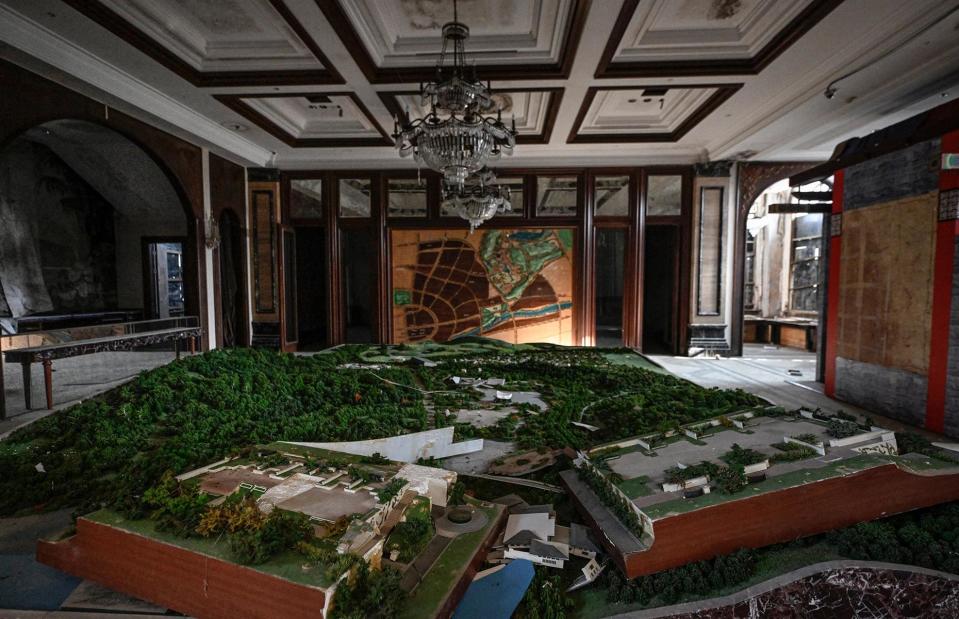
JADE GAO / AFP via Getty Images
As a result, funding for developments like this one was cut off, plans were abandoned and half-finished developments were deserted. Thanks to a government clampdown on excessive borrowing in 2020, demand for lavish homes has dried up even further, leaving numerous ghost towns – known as "rotten-tail" homes in Chinese – littering the landscape. According to AFP, one report suggests that almost 4% of housing projects in China have been abandoned half-built as of June 2022.
State Guest Mansions, Shenyang, China
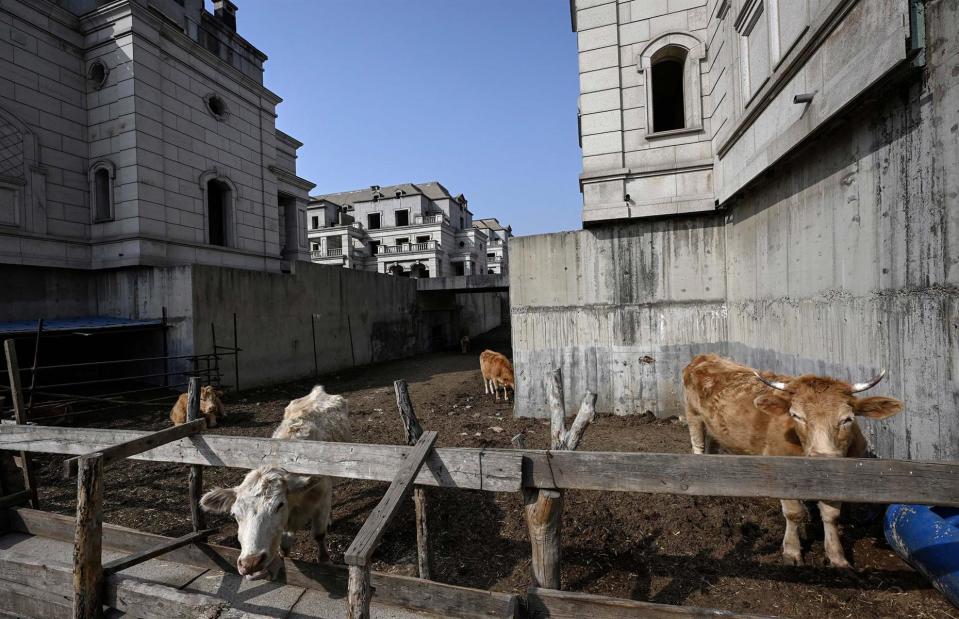
JADE GAO / AFP via Getty Images
However, the developer's loss has been the locals' gain and the slightly spooky neighbourhood has been given a new lease of life – albeit very different from the one intended. Farmers have moved into the ghost town and they plough the wide dirt roads, sowing crops that they irrigate with water from the man-made lake.
They've built pens between the villas to house their cattle and poultry, and the garages that were meant to house supercars now shelter hay bales and farm equipment. While there's little hope that the project will ever be completed, the locals are free to carry on using what might just be one of the world's most extraordinary makeshift farms.
McMansion Ghost Town, Missouri, USA

Serhii Chrucky / Alamy Stock Photo
What was meant to be a lavish, multibillion-dollar development soon turned into a nightmare for the people who chose to buy homes at the proposed Indian Ridge Resort Community, now known as the McMansion Ghost Town.
Plans for the ultra-exclusive community in Branson West, Missouri were announced in 2006 and the project was set to cost $1.6 billion (£1.3bn) to complete. Keen investors were promised that the state-of-the-art Ozarks compound would come equipped with everything a millionaire could need, from a shopping mall to a luxury hotel, as well as dozens of contemporary, castle-like houses.
McMansion Ghost Town, Missouri, USA
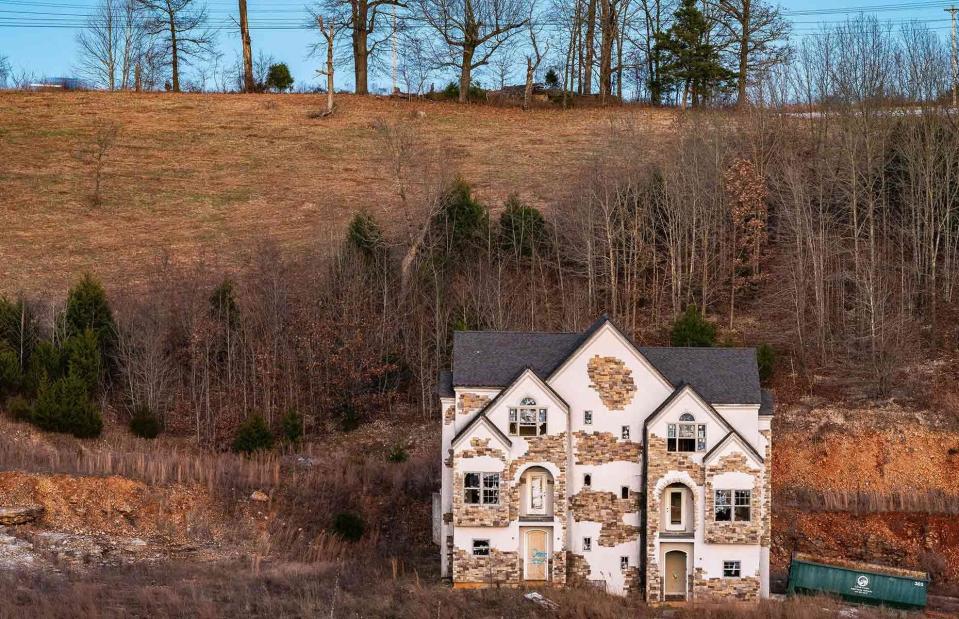
Serhii Chrucky / Alamy Stock Photo
Yet, sadly for those who invested in the project, the community would never come to fruition. The financial crisis hit, bank loans were defaulted on and construction work came to a swift halt. Only 13 homes were started and 15 years later, the 900-acre development was still not finished.
The ambition behind the development was evident. The unique ghost town featured grand, incomplete mansions that had lost the fight with Mother Nature. Weeds and trees had taken over the homes' interiors and many of the windows were smashed or missing.
McMansion Ghost Town, Missouri, USA
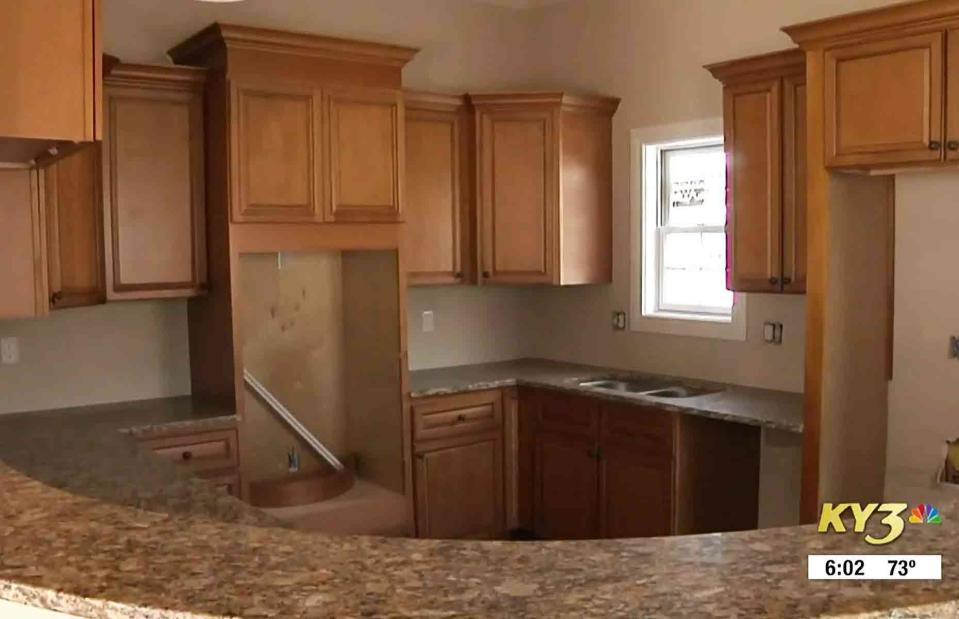
KY3
Missouri news station KY3 offered a glimpse of the incomplete interior of one of the homes. A half-fitted kitchen stood void of appliances, an empty shell once intended for family living.
Shrouded in controversy, the abandoned estate was at the centre of one of the largest real estate fraud investigations in American history back in 2017. At least three of the community's developers were reportedly imprisoned for bank fraud and money laundering. Those found guilty were also forced to pay back $14 million (£11m) that they borrowed under false pretences.
McMansion Ghost Town, Missouri, USA

Serhii Chrucky / Alamy Stock Photo
Despite being funded by ill-gotten gains, there appeared to be glimmers of hope for this abandoned town. Property developers Brookwood Group purchased the expansive estate and in 2018 they unveiled their plans. The company's proposed community was to be called The Ridge at Table Rock Lake, offering luxury homes as well as a hotel, hospitality, entertainment and healthcare facilities, right on the doorstep of the Ozarks. However, the plans never came to fruition.
In October 2022, theme park Silver Dollar City confirmed that they had purchased the site and that the townhouses would be torn down to make way for a new development. The abandoned settlement was demolished less than a month after the sale went through, closing the chapter on this half-built ghost town.
Skrunda-1 Soviet town, Raņķi Parish, Latvia
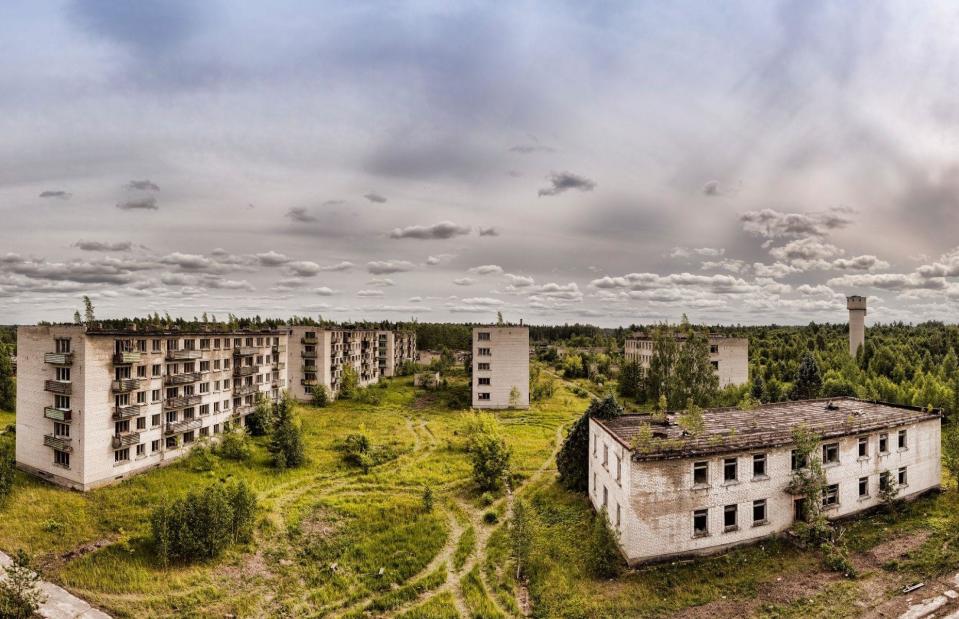
Valentina Abrazey / Shutterstock
93 miles west of Riga lies the sleepy Latvian town of Skrunda. Made up of farms, fields and quaint hamlets, the region also harbours a rather spooky secret. Known as Skrunda-1, this former Soviet metropolis stands derelict in the middle of the countryside. In its prime, the clandestine city housed more than 5,000 people but now serves as an eerie reminder of Latvia's turbulent history.
Skrunda-1 Soviet town, Raņķi Parish, Latvia
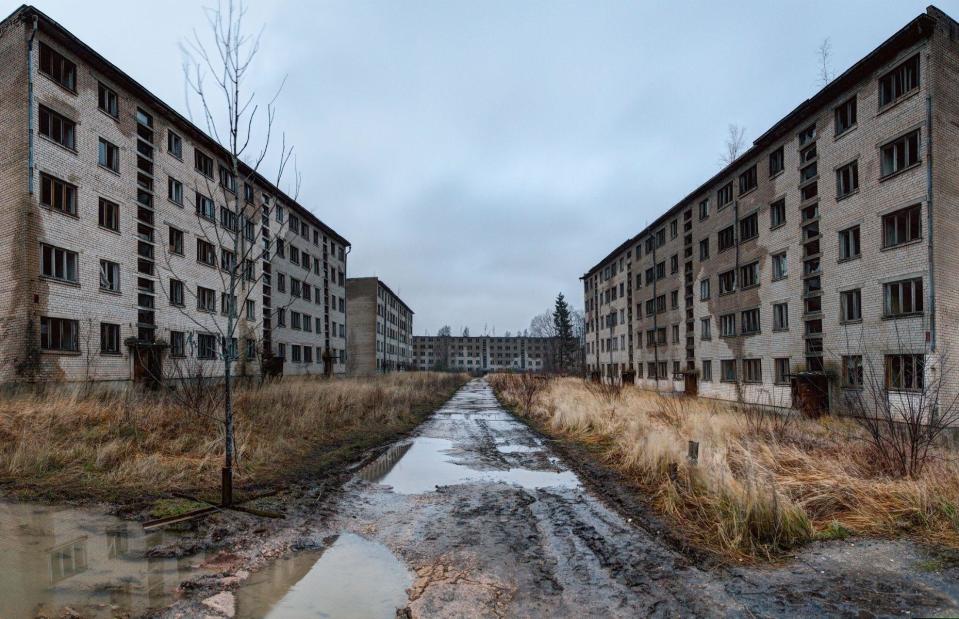
Yevgen Belich / Shutterstock
The Communist-era city was constructed in the 1960s and featured 10 Brutalist apartment blocks, a supermarket, a gymnasium, a school and even a nightclub.
The site also boasted a network of underground bunkers and several radar stations, which were strategically important to the Soviet Union. Covering western Europe, the stations detected objects in space and tracked possible incoming ballistic missiles that could have devastated the country.
Skrunda-1 Soviet town, Raņķi Parish, Latvia
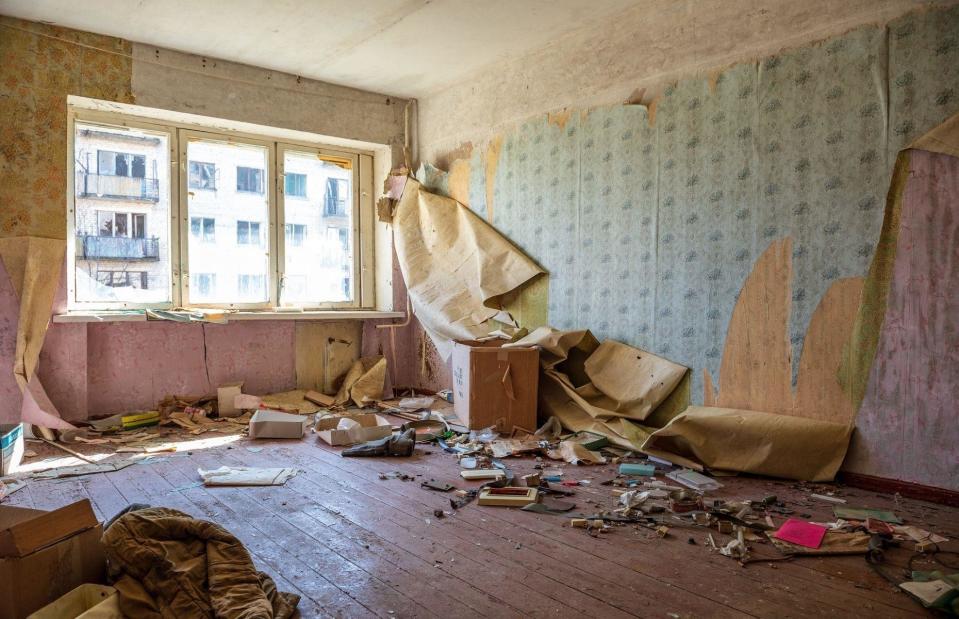
Martins Vanags / Shutterstock
The town is thought to be one of 40 secret settlements that the Soviets built during the height of their power. Once a thriving military and civilian community, Skrunda-1 soon fell into disrepair when the Soviet Union was dissolved in 1991.
The last remaining residents are said to have moved out of the town in 1999 and it has remained untouched ever since, with many of the buildings still containing photographs, clothing, furnishings, newspapers and children's toys.
Skrunda-1 Soviet town, Raņķi Parish, Latvia
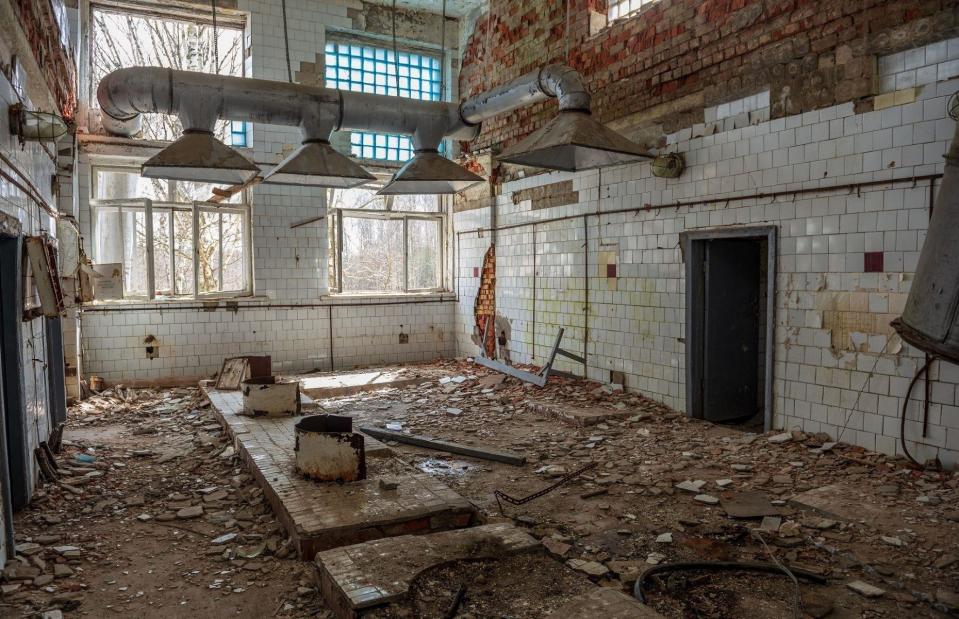
Martins Vanags / Shutterstock
In 2015, the Latvian government paid a private company roughly $14,000 (£11k) to purchase the town. The redevelopment plan intended to use half the town for military purposes, while the other half would consist of housing to be rented out to locals. However, it doesn't appear that any updates have been made in the years since the purchase, so the future of Skrunda-1 remains a mystery.
Skrunda-1 made headlines in February 2024 after a group of British Royal Marines who took part in a training programme at the abandoned outpost began legal proceedings against the UK Ministry of Defence. The group alleges that they were exposed to asbestos after sleeping in one of the buildings, which later tested positive for the carcinogen.
Sanatorio de Abona, Tenerife, Spain
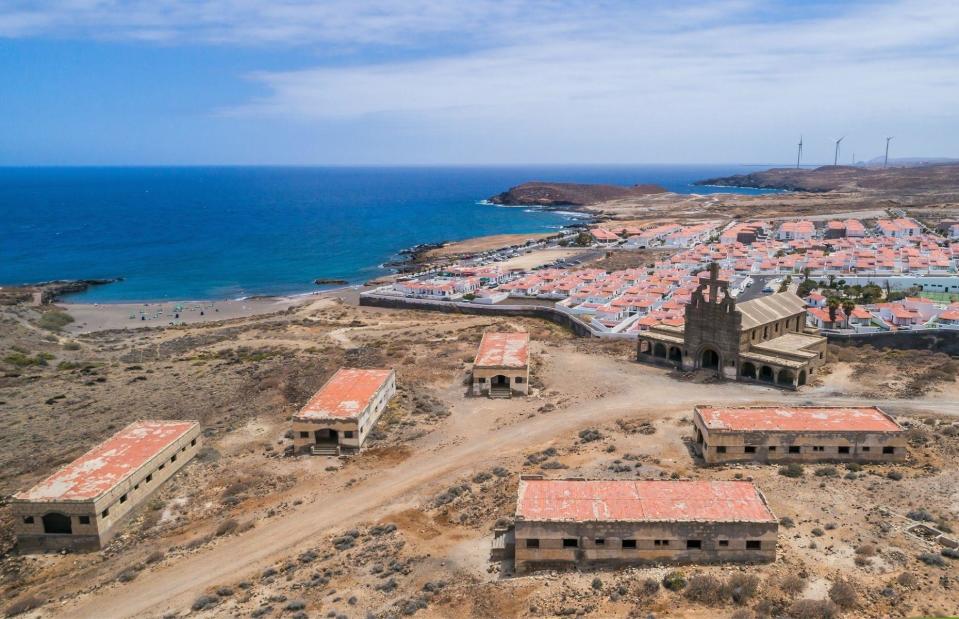
Chawranphoto / Shutterstock
The Spanish island of Tenerife is loved for its rugged volcanic landscape, black-and-white sand beaches and spectacular azure waters, but the picturesque holiday resort also harbours a rather unique landmark that very few people know about...
Sanatorio de Abona, Tenerife, Spain
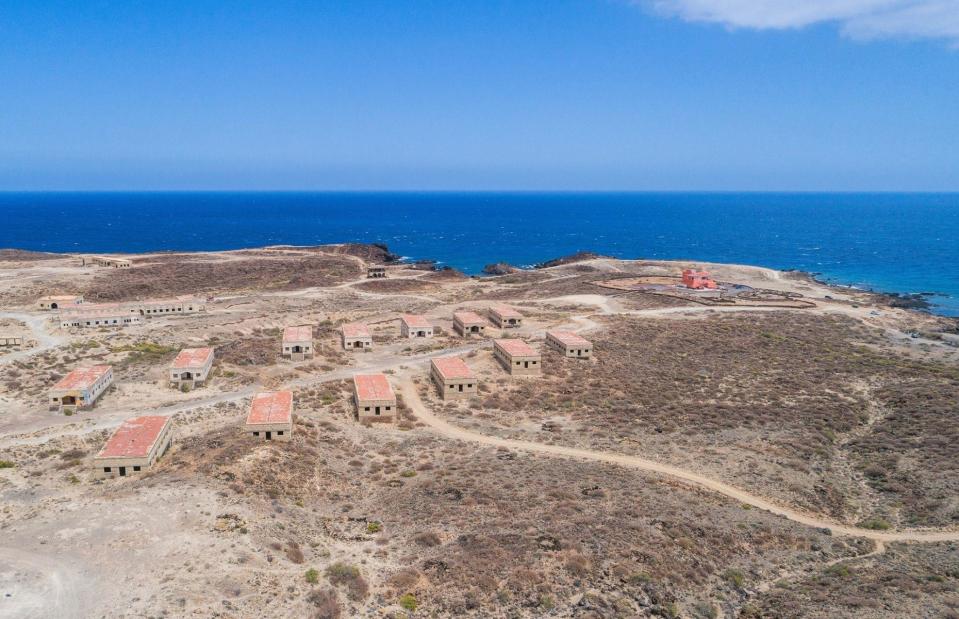
Chawranphoto / Shutterstock
Sanatorio de Abona can be found nestled on a scenic cliff face on the island's southeast coast. The sanatorium was designed in 1943 by the Spanish architect José Enrique Marrero Regalado after an outbreak of leprosy looked set to take over the country.
Sanatorio de Abona, Tenerife, Spain
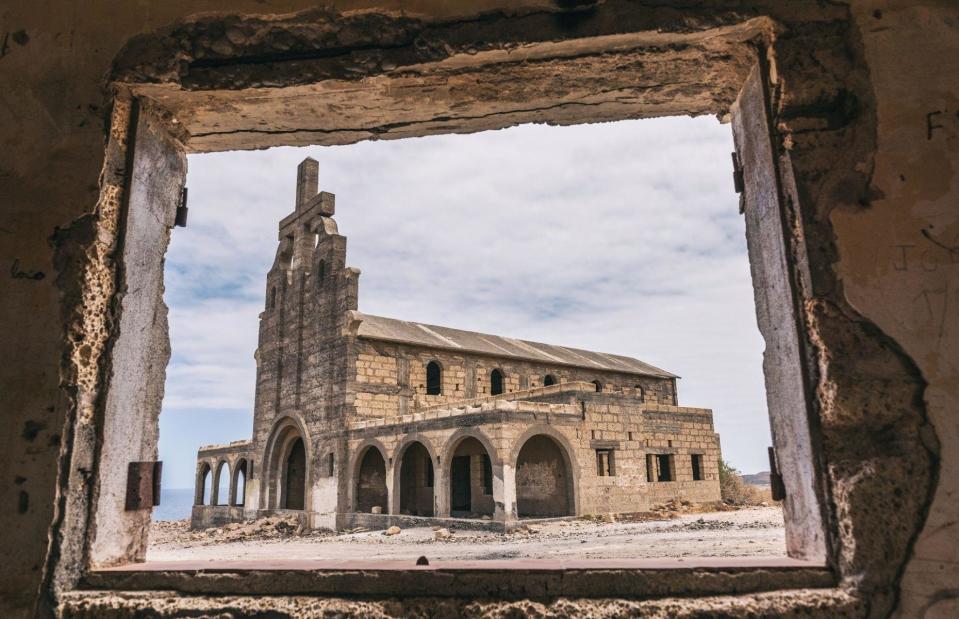
Chawranphoto / Shutterstock
At the time, many believed that isolating in a hot, dry climate was the best way to cure people of the progressive bacterial infection, so Tenerife was the perfect place to create purpose-built colonies where the sick could quarantine together.
Named Sanatorio de Abona, the small town was set to be made up of forty buildings, including a church, a crematorium, a hospital and various types of accommodation.
Sanatorio de Abona, Tenerife, Spain
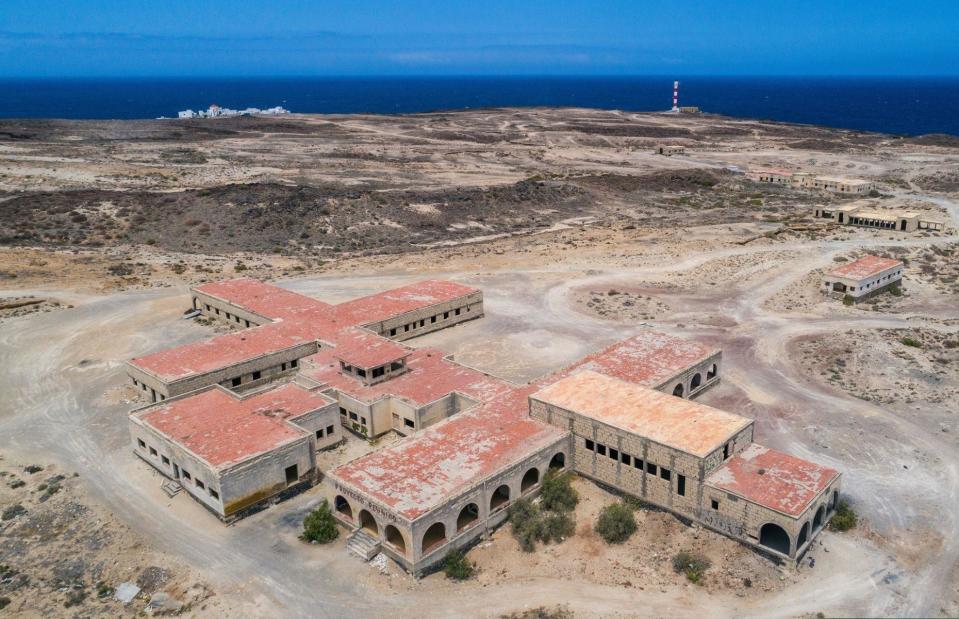
Chawranphoto / Shutterstock
Yet by 1945 a new antibiotic proved effective against the symptoms of leprosy, rendering the sanatorium obsolete before it was even finished. Construction work was halted, leaving many of the buildings partially finished and wasting the $77,630 that had already been spent on the project – that's around $1.3 million (£1m) in today's money.
Standing unoccupied for almost 80 years, Tenerife's abandoned leper colony is now an off-the-beaten-track tourist attraction, although it's surely just a matter of time before the place is redeveloped.
Craco, Matera, Italy
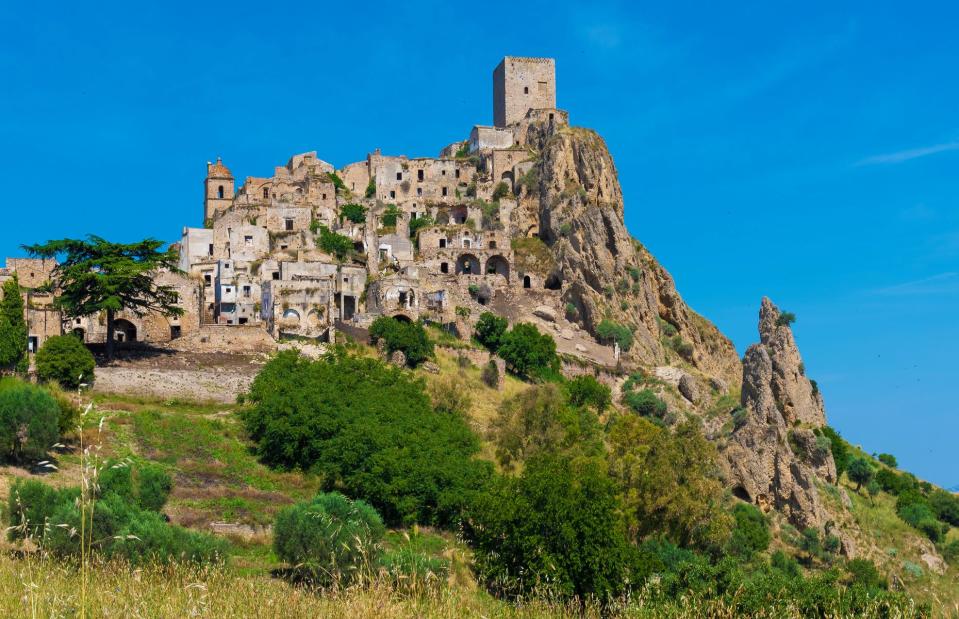
ValerioMei / Shutterstock
Situated in the southern Italian province of Matera in one of the world's most beautiful countries, Craco must be among the unluckiest villages in the world. After decades of bearing the brunt of Mother Nature, the town was finally abandoned in 1980.
Craco, Matera, Italy
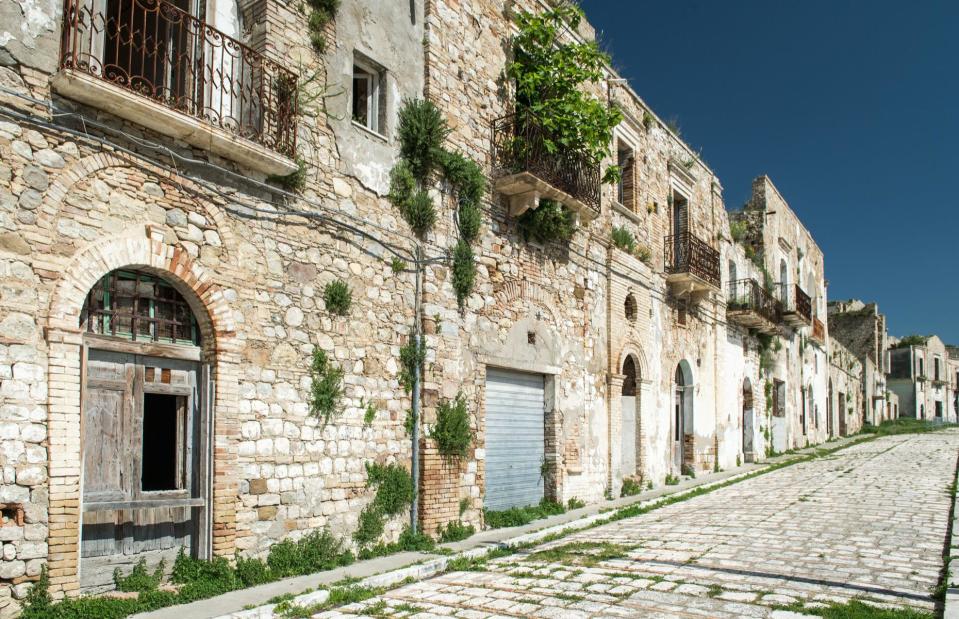
Massimiliano Marino / Shutterstock
The hilltop village has been occupied since the 10th century BC and at its height in 1881, the population exceeded 2,000 residents. However, 1963 signalled the start of a downward spiral, as a landslide forced inhabitants to relocate to a neighbouring valley. The situation worsened in 1972 when floods struck and a subsequent earthquake in 1980 proved the final nail in the coffin of this beautiful town.
Craco, Matera, Italy
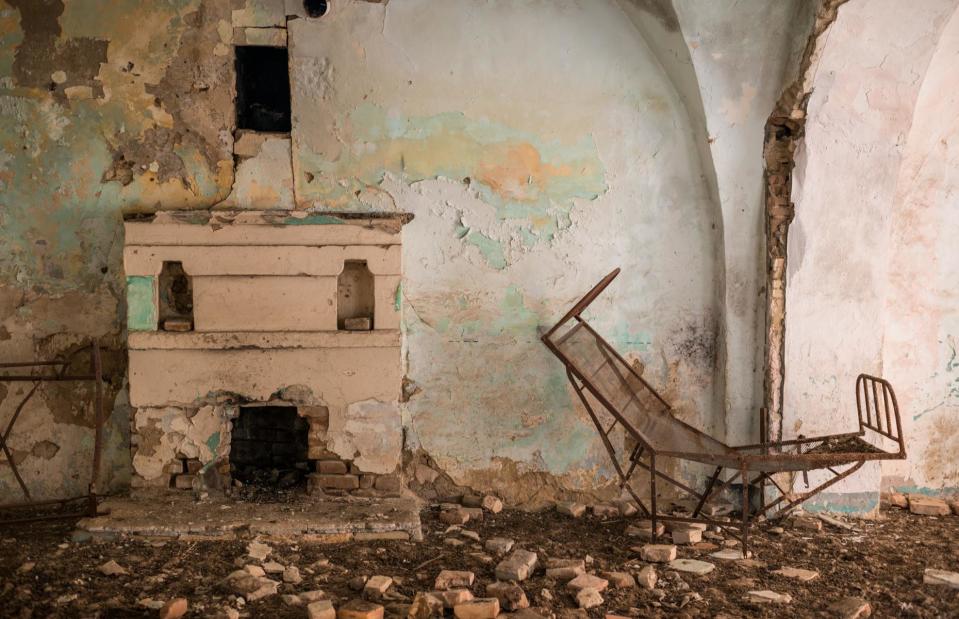
Alfonso Di Vincenzo / Shutterstock
Inside the remaining buildings, signs of domesticity remain, with a hearth and bed frame still visible in this dilapidated house. These days Craco is blocked off for safety reasons, however, private guided tours are now available for curious tourists.
Craco, Matera, Italy
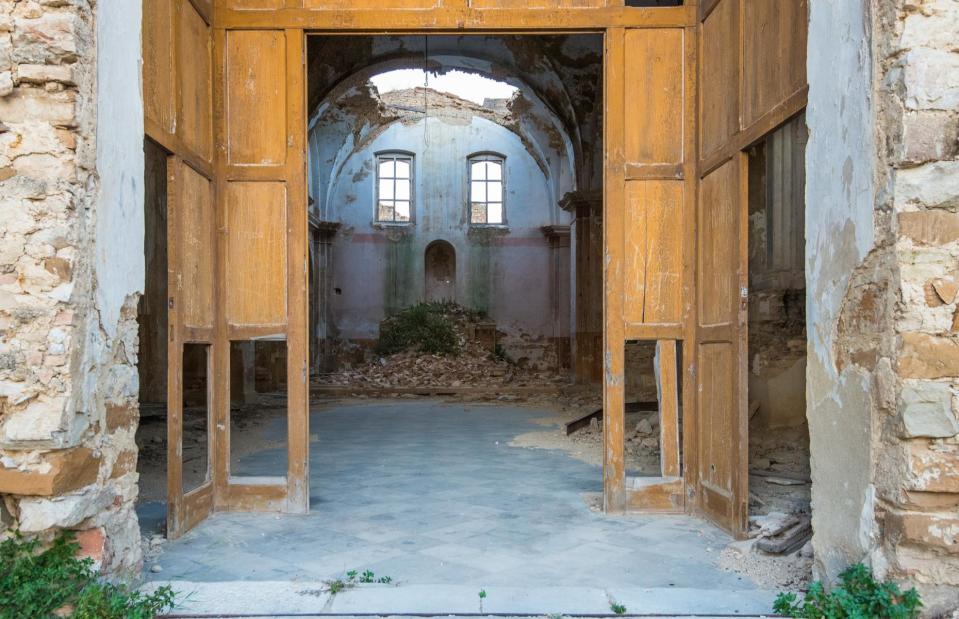
Alfonso Di Vincenzo / Shutterstock
Thanks to its dramatic landscape, the town has also been used as a backdrop for some of Hollywood's biggest blockbusters, including The Passion of Christ and Quantum of Solace.
Decades later, Craco's mystical charm still endures – inside the San Nicola church, vaulted columns hint at the former grandeur of this historic settlement.
Thames Town, Shanghai, China
![<p>Drew Bates / Flickr [CC BY 2.0 DEED]</p>](https://s.yimg.com/ny/api/res/1.2/1Osqcf8dasrtKoPOPYIHLA--/YXBwaWQ9aGlnaGxhbmRlcjt3PTk2MDtoPTYxOQ--/https://media.zenfs.com/en/loveexploring_uk_835/e6c0187247822fb8814eb7ce3a38fc32)
Drew Bates / Flickr [CC BY 2.0 DEED]
From its red telephone boxes and black cabs to the winding cobbled streets and Victorian terraces, this copycat ghost town is a pastiche of all things British. The only difference is, this London lookalike is 18 miles from downtown Shanghai.
Thames Town, Shanghai, China
![<p>Huai-Chun Hsu / Wikimedia Commons [CC BY 2.0 DEED]</p>](https://s.yimg.com/ny/api/res/1.2/844CyLU8jbFVsAICzpiMJg--/YXBwaWQ9aGlnaGxhbmRlcjt3PTk2MDtoPTYxOQ--/https://media.zenfs.com/en/loveexploring_uk_835/5c72a2be4c12416b05d79446aac72998)
Huai-Chun Hsu / Wikimedia Commons [CC BY 2.0 DEED]
Dubbed the real-life The Truman Show, this odd development was completed in 2006 to the eye-watering tune of $635 million (£500m). The project began as part of an initiative to lure half a million people away from overcrowded Shanghai and into smaller satellite suburbs, which were designed to resemble European cities.
Thames Town, Shanghai, China
![<p>Huai-Chun Hsu / Wikimedia Commons [CC BY 2.0 DEED]</p>](https://s.yimg.com/ny/api/res/1.2/LSARzo_n8iM7XExGL85ZKA--/YXBwaWQ9aGlnaGxhbmRlcjt3PTk2MDtoPTYxOQ--/https://media.zenfs.com/en/loveexploring_uk_835/fca7729902abe4767cb902b1c668f084)
Huai-Chun Hsu / Wikimedia Commons [CC BY 2.0 DEED]
Once a field of rice paddies, Thames Town is now home to a Gothic church, scenic canals, mock Tudor pubs, elegant Edwardian townhouses and even a small castle. The only thing missing is people.
With properties priced well out of reach for Shanghai's middle-class residents, most houses were purchased as investments or second homes and now lie vacant.
Thames Town, Shanghai, China
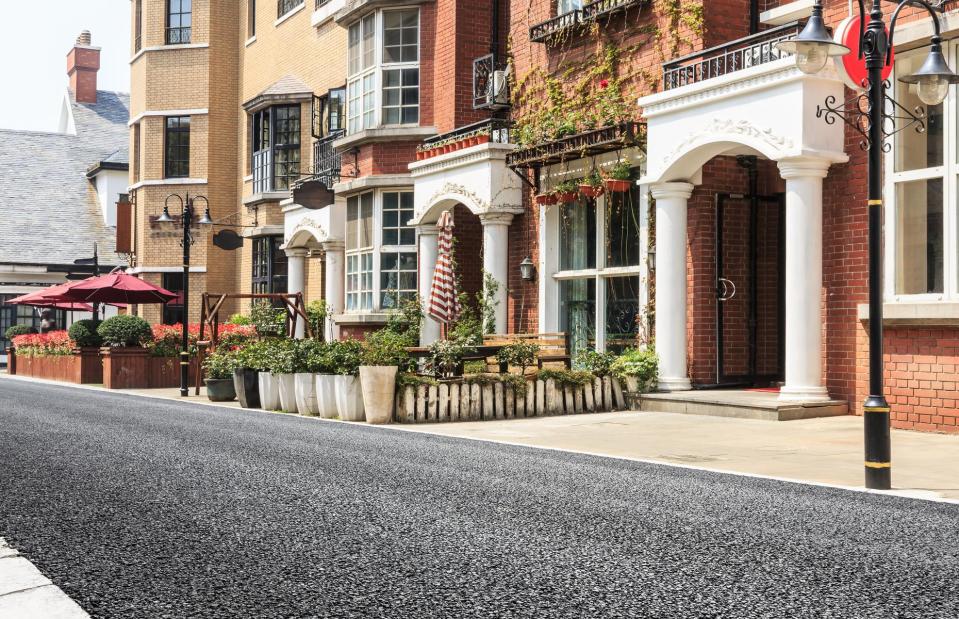
Zhao jian kang / Shutterstock
While the location is a popular backdrop for wedding photographs, no one is hanging around. Behind the grand façade, some of the retail units and restaurants lie empty. Even the town's bronze statues of James Bond, Harry Potter and Charles Dickens hold no sway in pulling in residents to this perplexing place.
Glenrio, New Mexico and Texas, USA
![<p>Brent Lind / Flickr [CC BY-ND 2.0 DEED]</p>](https://s.yimg.com/ny/api/res/1.2/QfIlqDYbYTGtdDSvyHg.rQ--/YXBwaWQ9aGlnaGxhbmRlcjt3PTk2MDtoPTYxOQ--/https://media.zenfs.com/en/loveexploring_uk_835/297c2d99236ab2f79f1a9705f1bcb621)
Brent Lind / Flickr [CC BY-ND 2.0 DEED]
Uniquely positioned on the state line between Texas and New Mexico, Glenrio began life as a railroad town in 1903. A stopping point on the Rock Island and Pacific Road, the quaint town was once home to a motel, grocery stores, service stations and cafes.
Glenrio, New Mexico and Texas, USA
![<p>jaygannett / Flickr [CC BY-SA 2.0 DEED]</p>](https://s.yimg.com/ny/api/res/1.2/JwfBVcN0AnGqY29jjlC6nQ--/YXBwaWQ9aGlnaGxhbmRlcjt3PTk2MDtoPTYxOQ--/https://media.zenfs.com/en/loveexploring_uk_835/4978b4f333e857b6e83d8e49087a6612)
jaygannett / Flickr [CC BY-SA 2.0 DEED]
With the dawn of the national highway system in the 1930s, Glenrio became a popular stopping point for road trippers driving the iconic Route 66. Despite the population barely rising above 30, the small town was thriving and even played host to film crews when John Steinbeck's The Grapes of Wrath was shot there in 1940.
Glenrio, New Mexico and Texas, USA
![<p>Barbara Brannon / Flickr [CC BY 2.0 DEED]</p>](https://s.yimg.com/ny/api/res/1.2/Dz_6RIy4j_8LBi9tGwNEUA--/YXBwaWQ9aGlnaGxhbmRlcjt3PTk2MDtoPTYxOQ--/https://media.zenfs.com/en/loveexploring_uk_835/38c7879adc11a8a72a2e581c5917716f)
Barbara Brannon / Flickr [CC BY 2.0 DEED]
Former resident John Paul Ferguson worked at the gas stations during the summer and recalls the constant streams of traffic through the town. However, Glenrio's luck ran out in 1975 when Interstate 40 bypassed the town, cutting it off from the passing tourist trade.
Glenrio, New Mexico and Texas, USA
![<p>Barbara Brannon / Flickr [CC BY 2.0 DEED]</p>](https://s.yimg.com/ny/api/res/1.2/bJ1Cvfz68c_hn_e9eRArCw--/YXBwaWQ9aGlnaGxhbmRlcjt3PTk2MDtoPTYxOQ--/https://media.zenfs.com/en/loveexploring_uk_835/ed27f566d2836c11be11ba75c3fe33e5)
Barbara Brannon / Flickr [CC BY 2.0 DEED]
All that remains of the once-booming spot are 17 time-warp buildings untouched for decades and the old Route 66 roadbed. An evocative location harking back to America's mid-century heyday, the remarkable ghost town was listed in the National Register of Historic Places in 2007.
However, change may be on the horizon. In February 2022, it was reported that business partners Gabi Tuschak and Lance Olinger had bought up Glenrio with the hopes of turning the faded outpost into a nostalgic tourist destination. Their plans include transforming the old café into a welcome centre and gift shop, as well as renovating the motel so it can welcome visitors once more.
Ciudad Jardín Soto Real, Buniel, Spain
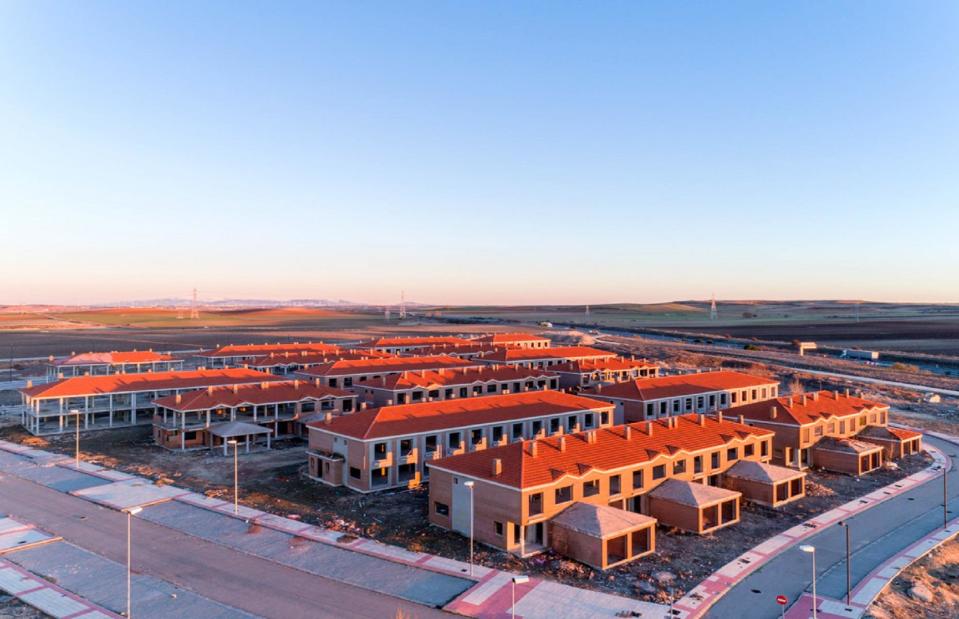
Markel Redondo
Back in 2008, the global financial crisis caused chaos around the world but some countries were affected more than others. Spain's housing market all but collapsed, leaving many developers bankrupt and significant housing projects across the country incomplete. Some 12 years later and one of the country's largest developments, Ciudad Jardín Soto Real, still sits unfinished.
Ciudad Jardín Soto Real, Buniel, Spain
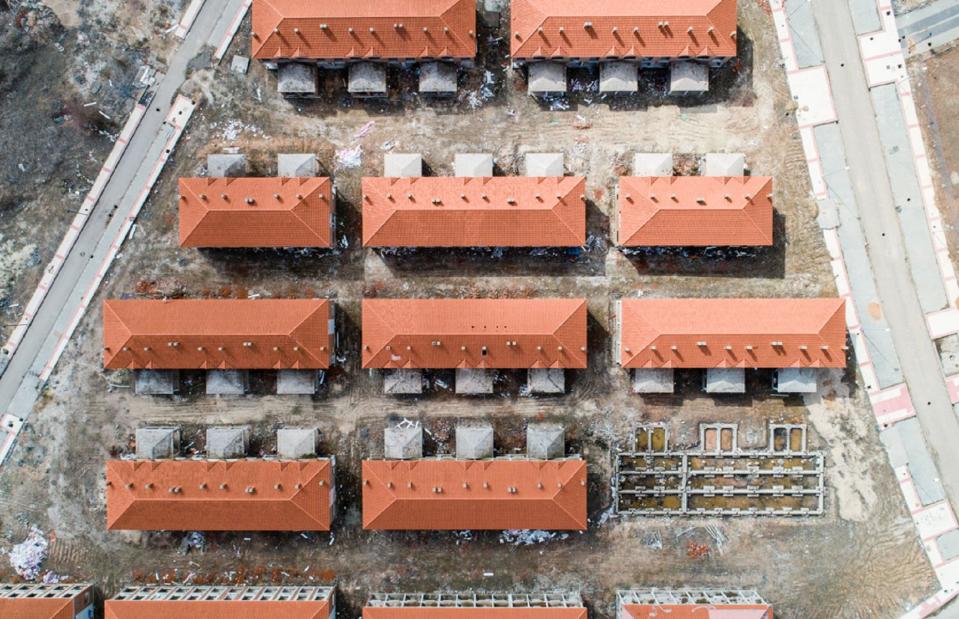
Markel Redondo
The town was captured by photographer Markel Redondo in 2018 and highlights the colossal damage that the financial crisis caused almost overnight.
Located in the municipality of Buniel, just 312 of the estate's proposed 1,400 homes were built and those standing are in various stages of completion. The development was abandoned in the summer of 2008 when the construction company behind the project, Martinsa-Fadesa, entered into voluntary liquidation.
Ciudad Jardín Soto Real, Buniel, Spain
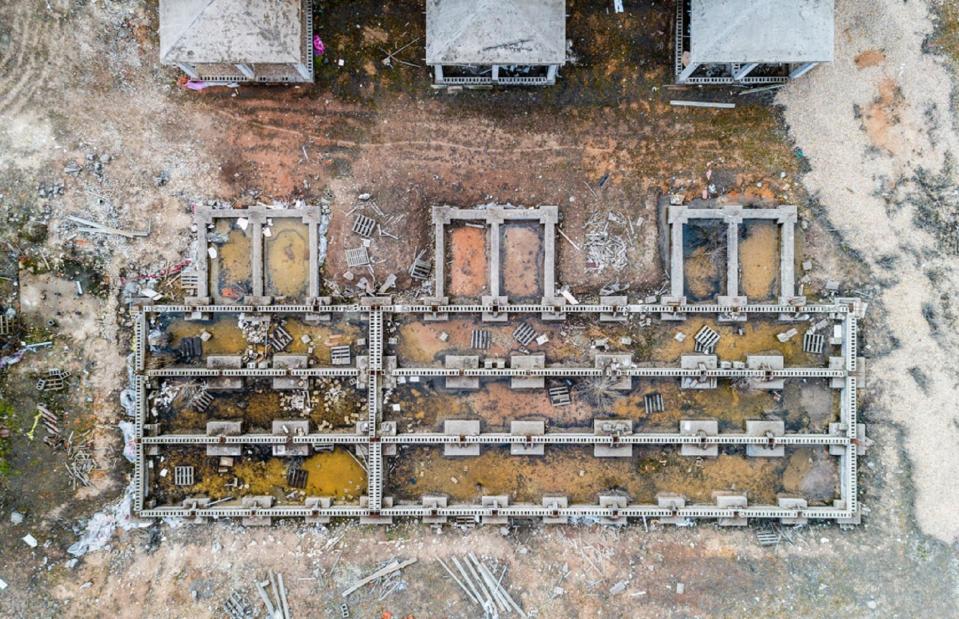
Markel Redondo
The site sits behind a high-security fence but over the years thieves have stripped the development of its valuables, from copper wiring to bricks and even the manhole covers on the estate's roads. Yet due to its semi-remote location, many have forgotten that Ciudad Jardín Soto Real even exists.
Ciudad Jardín Soto Real, Buniel, Spain

Markel Redondo
Sadly, Ciudad Jardín Soto Real is just one of many similar development projects across Spain that have been left to decay. By capturing the estate in its current state, Redondo hopes to encourage the Spanish government to put the properties to good use.
In 2018 he told WIRED: "We could do a lot of things with these abandoned projects. People are being kicked out of their houses in every major city because they can't afford them. We have a lot of people who need homes."
Currently, empty residential plots are available to build on, with prices available upon request. You just have to be ok with living in a ghost town!
Centralia, Pennsylvania, USA
![<p>Peter & Laila / Flickr [CC BY 2.0 DEED]</p>](https://s.yimg.com/ny/api/res/1.2/xK1gQijjq4qtlUsCt_tc4w--/YXBwaWQ9aGlnaGxhbmRlcjt3PTk2MDtoPTYxOQ--/https://media.zenfs.com/en/loveexploring_uk_835/d59bfa363f946a073f485b99c779ee09)
Peter & Laila / Flickr [CC BY 2.0 DEED]
Once home to thousands, this Pennsylvania mining town's population upped and left following a bizarre fire that began in 1962 and still rages on today – more than 60 years later.
Centralia, Pennsylvania, USA
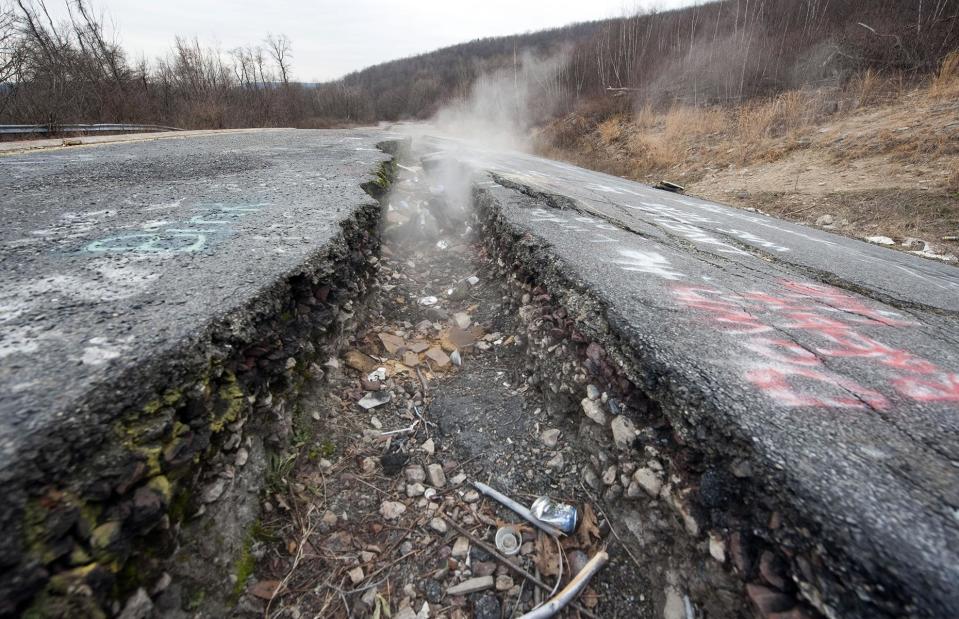
DON EMMERT / AFP / Getty Images
The blaze began the day before Labor Day. In a strange series of events, the fire was intentionally set in order to burn out an old landfill beneath the town. However, the site was connected to a system of disused coal mining tunnels and the inferno quickly spiralled out of control.
Here, a crack along the town's deserted Highway 61 still billows out sulfurous gases.
Centralia, Pennsylvania, USA
![<p>Peter & Laila / Flickr [CC BY 2.0 DEED]</p>](https://s.yimg.com/ny/api/res/1.2/F9WuptJnf6ouuGwWB1y9Ow--/YXBwaWQ9aGlnaGxhbmRlcjt3PTk2MDtoPTYxOQ--/https://media.zenfs.com/en/loveexploring_uk_835/a9093f77dede0f1f4847b81c83df32eb)
Peter & Laila / Flickr [CC BY 2.0 DEED]
The blaze spewed toxic fumes into the atmosphere and over the years the ground beneath the borough reached over 900 degrees in some locations. With gas pouring into basements and sinkholes suddenly opening up, a $42 million (£33m) relocation plan saw most of Centralia's residents up sticks and leave the poisonous district in the 1980s.
Centralia, Pennsylvania, USA
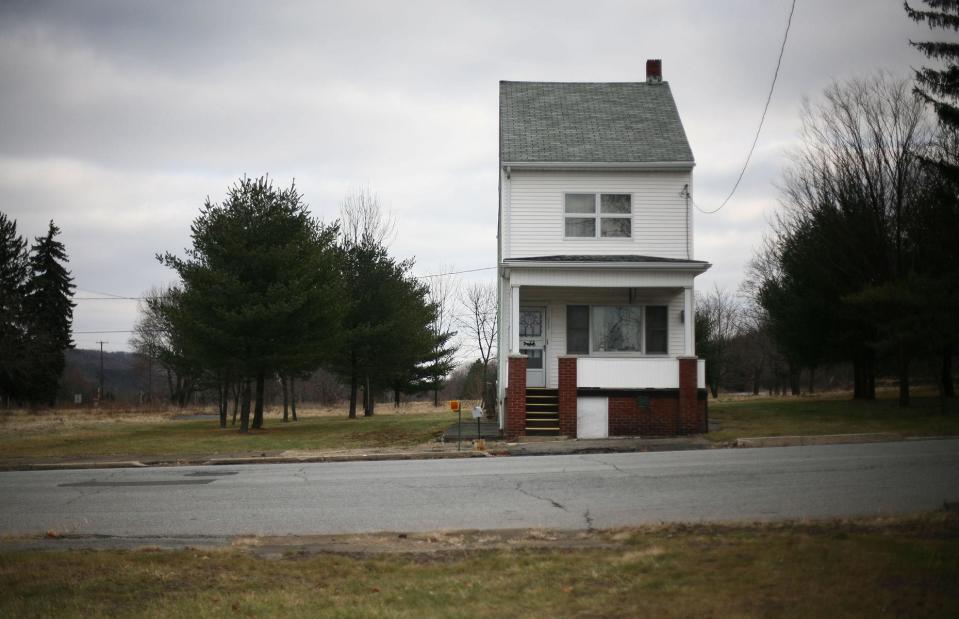
ZUMA Press, Inc. / Alamy Stock Photo
As a mass exodus swept the toxic town, most of the homes were demolished, although as late as 2020 there were still four people living in Centralia, clinging to their old homes.
Single properties like this are a stark reminder of the town's former life. Still alight today, it's said that there's enough coal underground to fuel the blaze for a further 250 years.
Sanzhi Pod City, New Taipei, Taiwan

Eddie Gerald / Alamy Stock Photo
Designed as a seaside holiday resort for US military officers and middle-class Taiwanese, Sanzhi Pod City made for a chilling sight. The eerie development was never completed, having been left to ruin in 1980.
Sanzhi Pod City, New Taipei, Taiwan
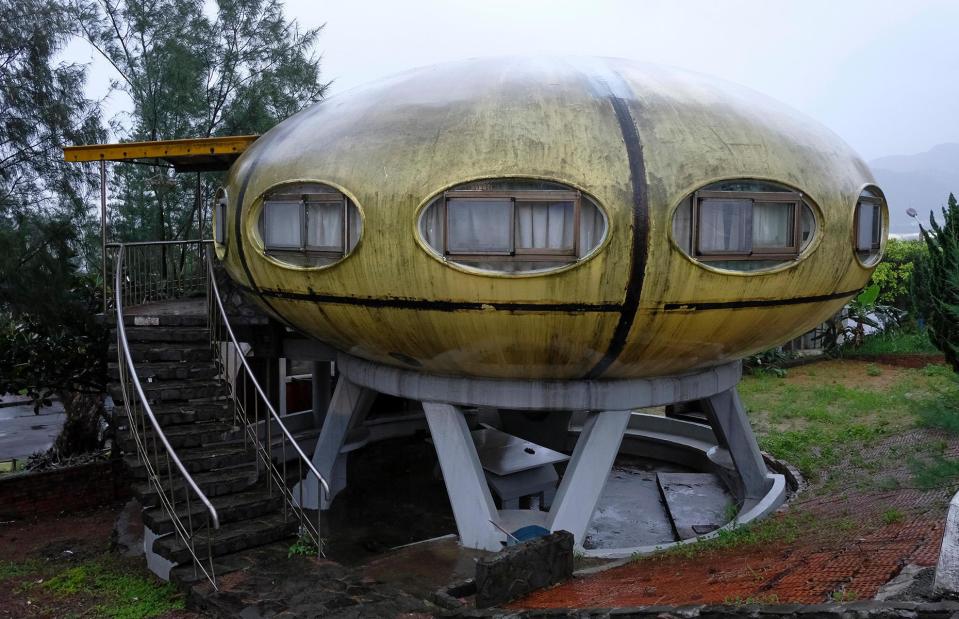
Eddie Gerald / Alamy Stock Photo
Located on the northern coast of Taiwan, the futuristic resort town featured a complex of bright UFO-shaped homes and a large swimming pool complex.
Construction was halted on the site two years after it had begun, with the developers citing financial constraints following investment losses.
Sanzhi Pod City, New Taipei, Taiwan
![<p>Carrie Kellenberger / Wikimedia Commons [CC BY 2.0 DEED]</p>](https://s.yimg.com/ny/api/res/1.2/.jC9v7XUgP2EK9BfK7_bSQ--/YXBwaWQ9aGlnaGxhbmRlcjt3PTk2MDtoPTYxOQ--/https://media.zenfs.com/en/loveexploring_uk_835/5254a5debd3b44752ff79931207c97c3)
Carrie Kellenberger / Wikimedia Commons [CC BY 2.0 DEED]
Designed in a retro style that was popular at the time, the price of these unique homes was so high that almost none of the pods sold.
Having lost the fight with Mother Nature, they were abandoned on the overgrown coastline, reduced to graffitied ruins frequented by curious tourists.
Sanzhi Pod City, New Taipei, Taiwan
![<p>Carrie Kellenberger / Wikimedia Commons [CC BY 2.0 DEED]</p>](https://s.yimg.com/ny/api/res/1.2/gRToXt8inTI9k5QvVte4GA--/YXBwaWQ9aGlnaGxhbmRlcjt3PTk2MDtoPTYxOQ--/https://media.zenfs.com/en/loveexploring_uk_835/ec3a3410b91fa5cca64365ad1eeeeb51)
Carrie Kellenberger / Wikimedia Commons [CC BY 2.0 DEED]
The deserted development, which would have offered residents tranquil sea views, was demolished in 2010, with plans to turn the site into a resort and waterpark.
As of 2024, no pod homes remain, but the planned redevelopment of the site doesn't appear to have begun. We're intrigued to see how this project evolves – if it ever does!
Wittenoom, Pilbara, Australia
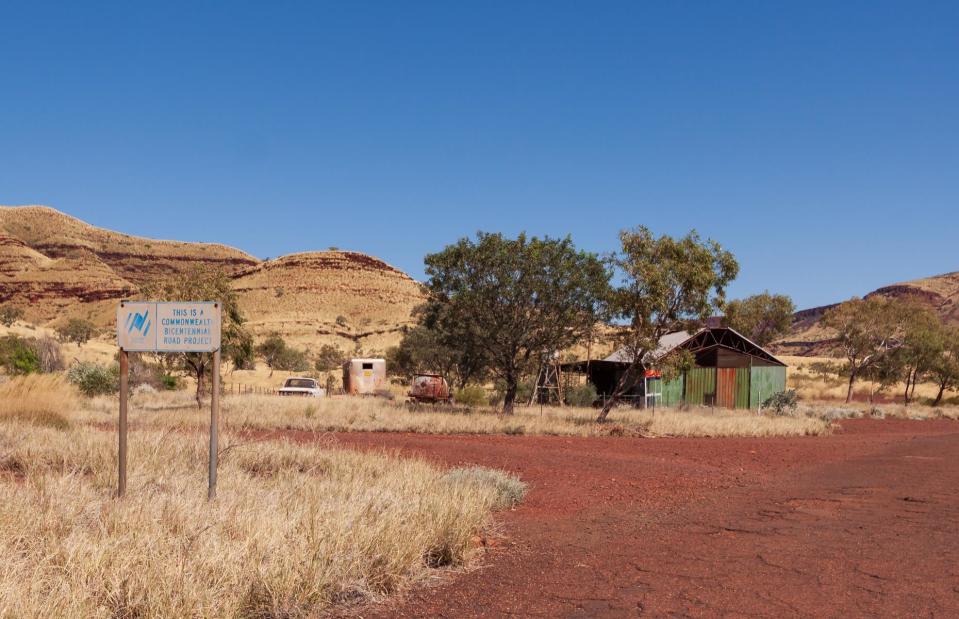
Philip Schubert / Shutterstock
This next abandoned outpost has been described as one of the most dangerous and contaminated places on the planet. Once located in the dry, dusty climes of Pilbara, the unassuming small town of Wittenoom belied a toxic surprise hiding underground...
Wittenoom, Pilbara, Australia

Philip Schubert / Shutterstock
From the 1930s to the 1960s, Wittenoom was home to around 20,000 people, many of whom worked in Australia's only blue asbestos mine, which was located there. More than 2,000 deaths have been linked to the town's toxic mining activities and the mine subsequently closed its doors for good in 1966.
Wittenoom, Pilbara, Australia
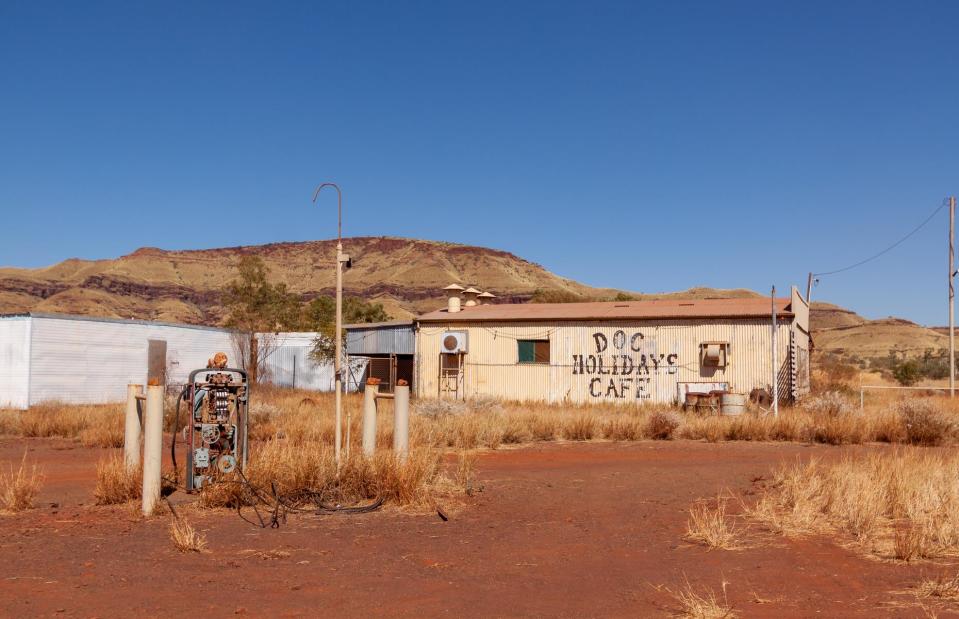
Philip Schubert / Shutterstock
After the closure, the population began to rapidly decline, leaving buildings like Doc Holiday's Cafe to the dust. In 2007, the Western Australia Government officially struck Wittenoom off the map and cut off the town's electricity supply and mail services.
Wittenoom, Pilbara, Australia
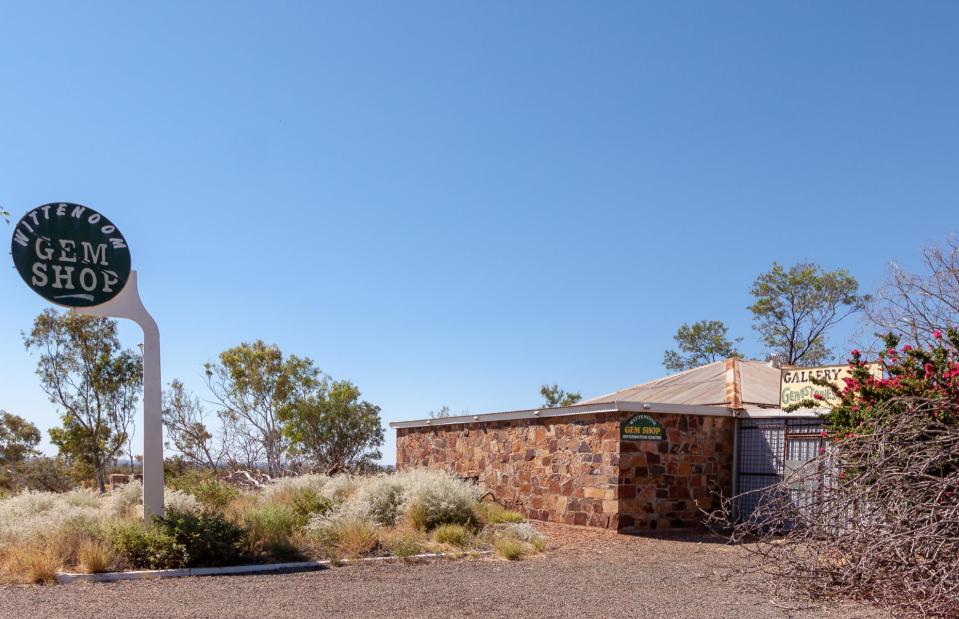
Philip Schubert / Shutterstock
It was labelled one of the most significant industrial disasters in Western Australia and while the government tried to dissuade visitors from venturing into the contaminated area, Wittenoom was a popular destination in recent years for those seeking so-called dark tourism.
In May 2023, the demolition of Wittenoom's remaining buildings began, closing the chapter on the town's dark past.
Tyneham, Dorset, UK
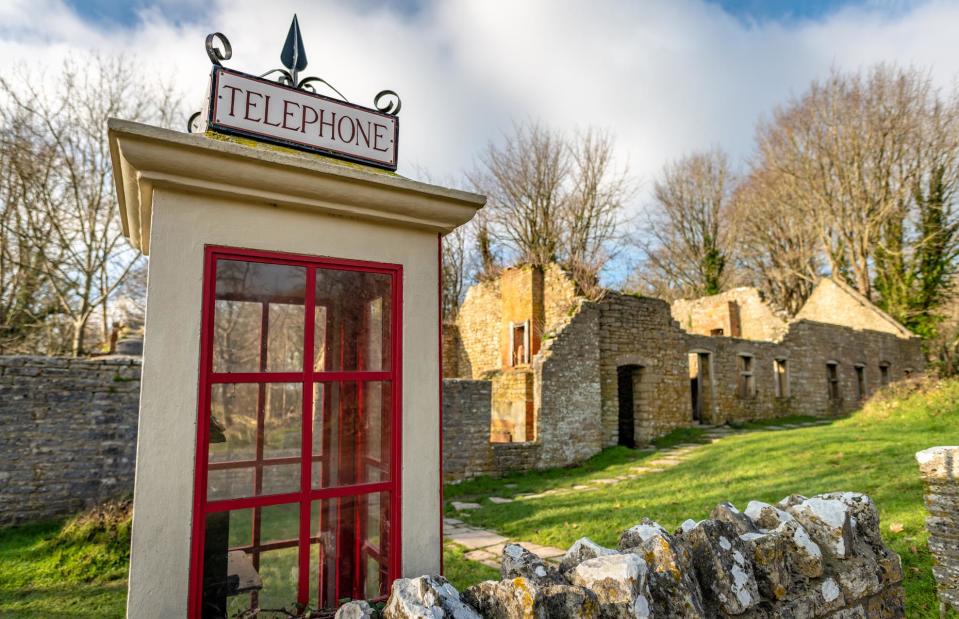
Thomas Faull / Shutterstock
Once home to 225 people, the rural village of Tyneham in the southwest of England is now no more than ruins. Its population deserted the town just before Christmas in 1943, though it wasn't exactly by choice...
Tyneham, Dorset, UK
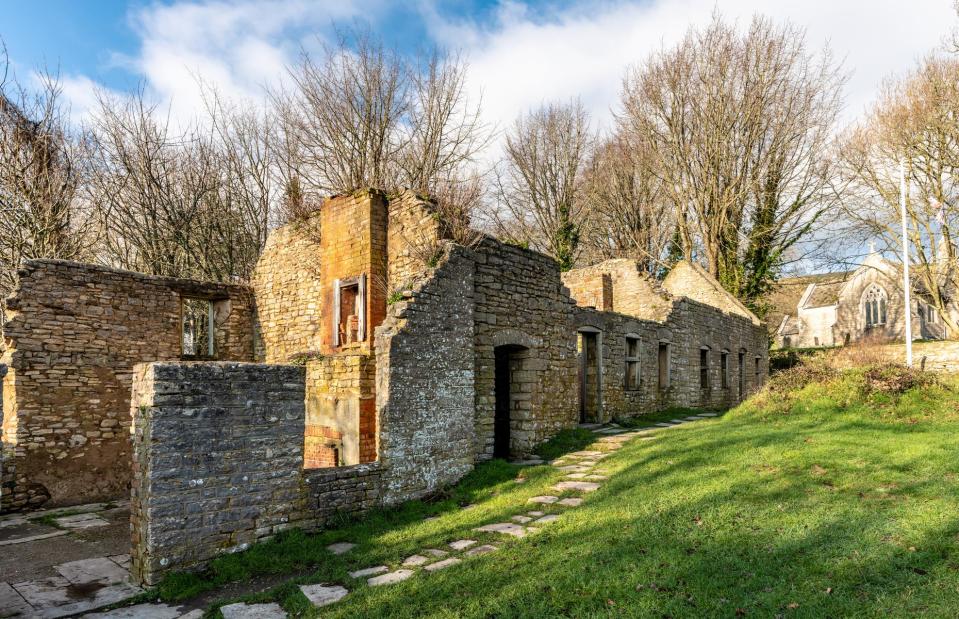
Thomas Faull / Shutterstock
As the Second World War raged on, the War Office requisitioned the town to use as a tank firing range prior to D-Day. Residents were promised that they could return to their homes once the war was over. As they left, a note was pinned on the door of Tyneham Church that read: '"Thank you for treating the village kindly."
Tyneham, Dorset, UK
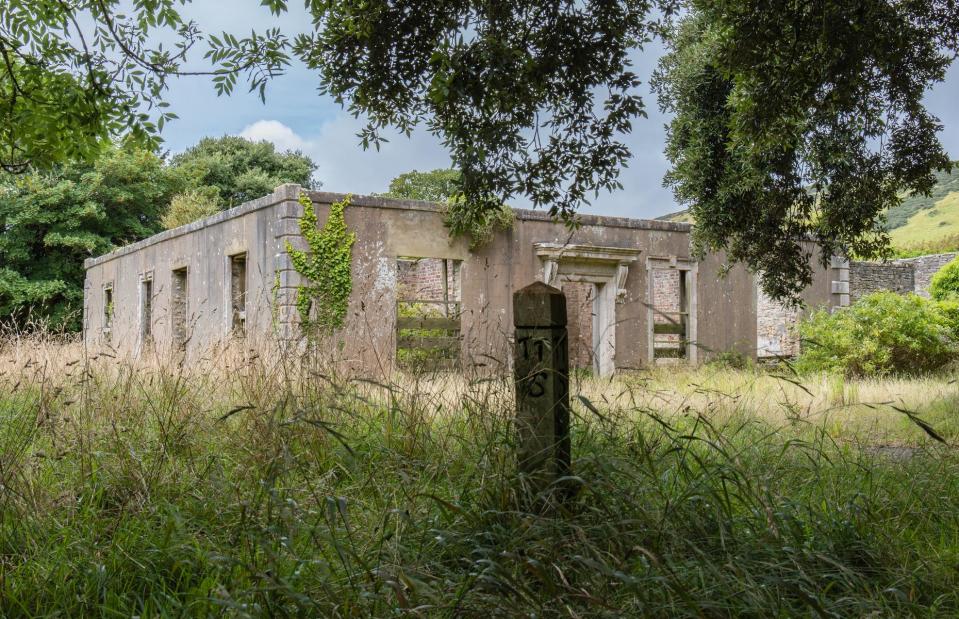
Jeff Whitehill / Shutterstock
However, Tyneham's residents never did return. Decades later, the village's manor house (pictured) is a relic of its former self, and the post office, rectory and cottages stand roofless and crumbling.
While the evacuation was intended to be temporary, the army placed a compulsory purchase order on the land in 1948 and has retained it for military use ever since.
Tyneham, Dorset, UK
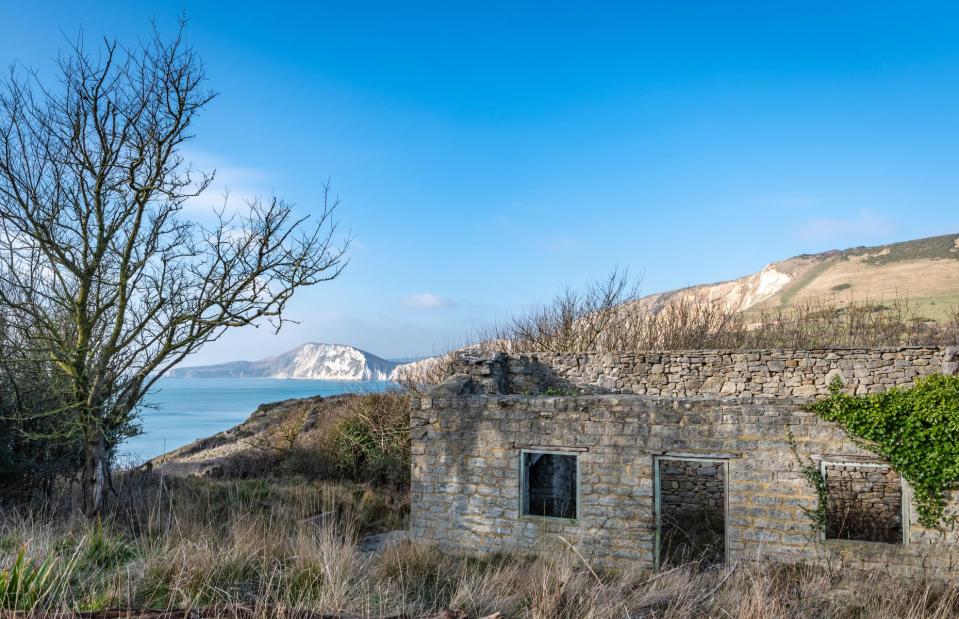
Thomas Faull / Shutterstock
With its eerie abandoned spaces, the strange beauty of Tyneham's ruins has fascinated passing walkers for decades. We can only imagine the gorgeous sea views that former residents once enjoyed from this dilapidated farmhouse.
Although the church and school have been restored, in late 2019, parts of the village were closed to the public after the Ministry of Defence found seven of the buildings to be unsafe. Now, its fate hangs in the balance...
Burj Al Babas, Bolu Province, Turkey
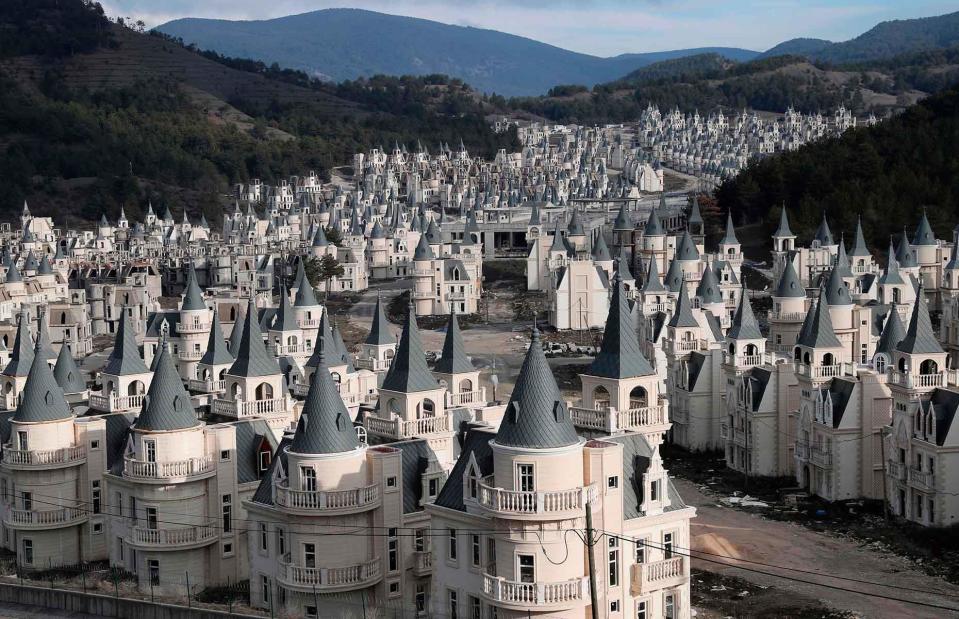
ADEM ALTAN / AFP / Getty Images
Nestled in a rural mountainous spot, halfway between Istanbul and Ankara, this modern abandoned ghost town is a surreal sight to behold. Hundreds of mini châteaux, in various stages of completion, stand in a deathly silent valley after funding for the project dried up.
Burj Al Babas, Bolu Province, Turkey
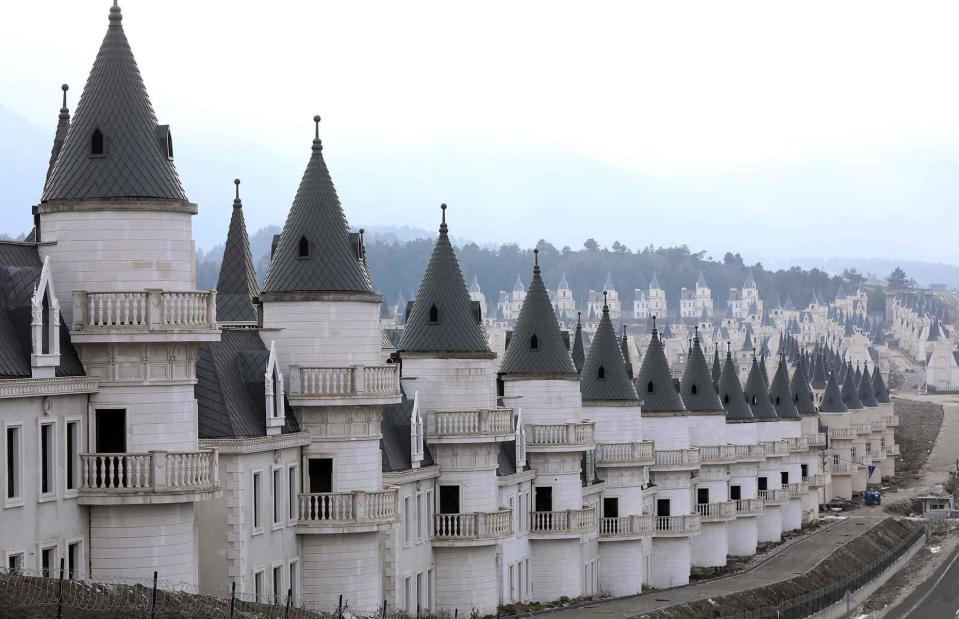
ADEM ALTAN / AFP / Getty Images
Construction of the Burj Al Babas development in Turkey began in 2014, led by the Sarot Group. 587 châteaux have been finished, however, following the collapse of the Turkish economy in 2018, the company declared bankruptcy and the project was brought to a standstill.
Burj Al Babas, Bolu Province, Turkey
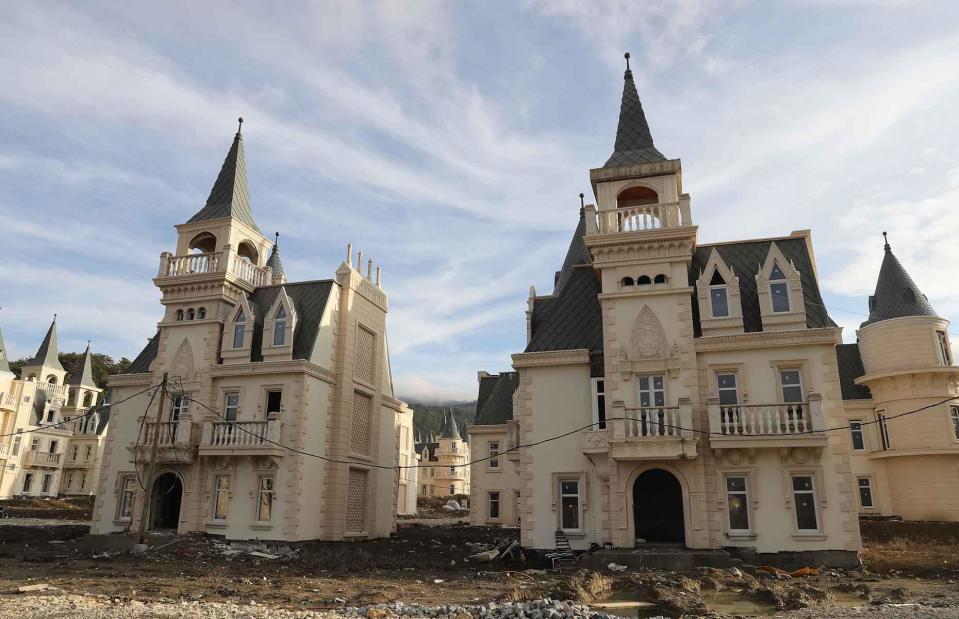
ADEM ALTAN / AFP / Getty Images
Once complete, the complex was intended to accommodate 732 villas, a shopping centre, cinema, restaurants and fitness facilities.
Worth between $400,000 (£314k) and $500,000 (£393k), the identical three-storey castle-like homes, which look like something from the pages of Cinderella, feature turrets and elaborate circular balconies.
Burj Al Babas, Bolu Province, Turkey
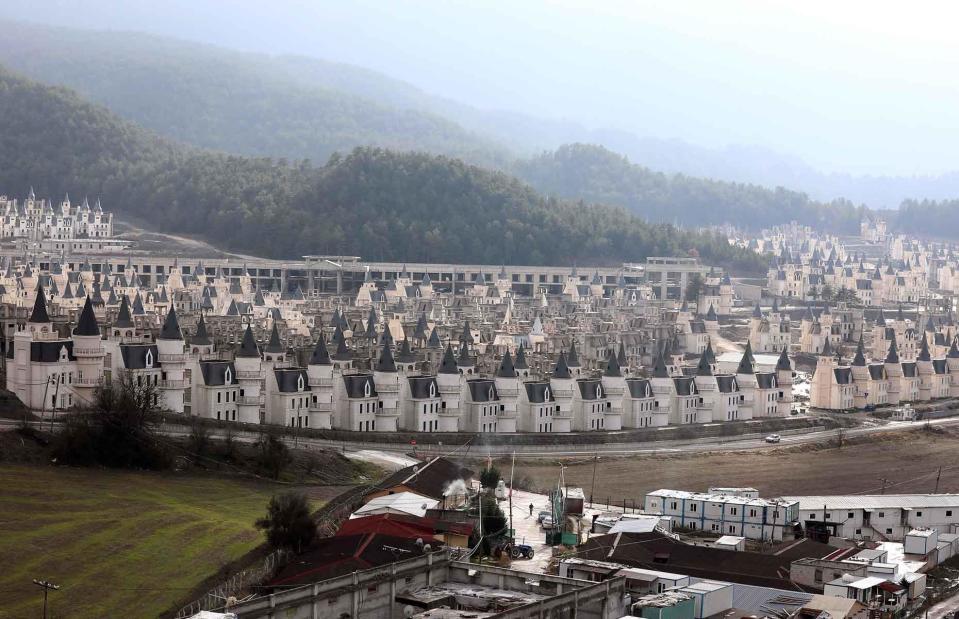
ADEM ALTAN / AFP / Getty Images
The abandoned construction site can still be seen just beyond the boundary of the $200 million (£157m) estate. Having managed to write off half of their debt, the Sarot Group's deputy chairman declared in 2019 that he was hopeful the project would finally be completed in 2021, according to the Hurriyet Daily News.
However, given its dormant social media accounts and deserted construction site, it doesn't look like the fairytale development will have a happy ending anytime soon...
Eagle Mountain, California, USA
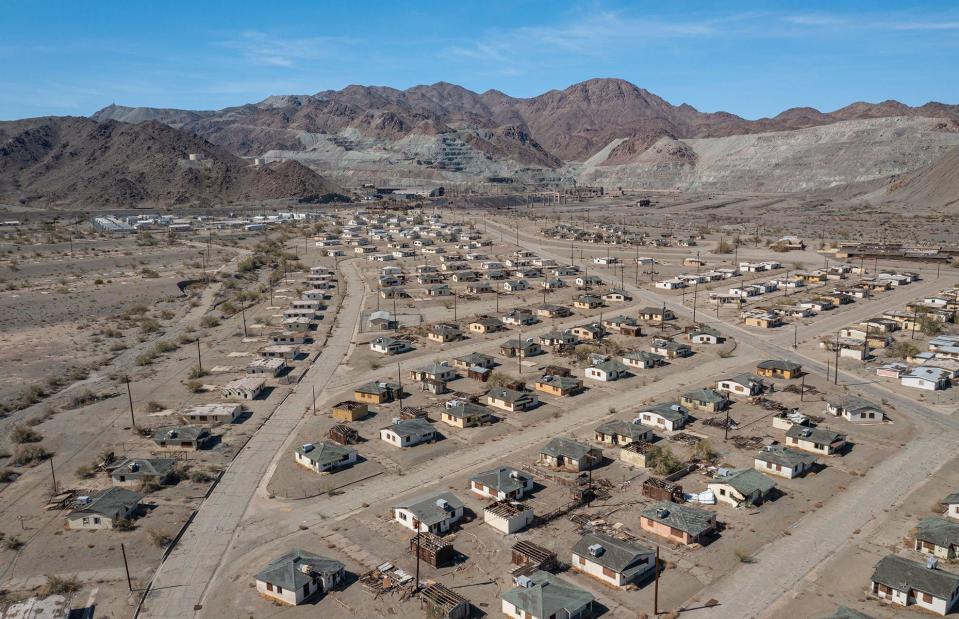
Wirestock, Inc. / Alamy Stock Photo
Formerly a thriving company town, Eagle Mountain is now an abandoned California dust bowl on the outskirts of Joshua Tree National Park.
The majority of its citizens were employed at the nearby Kaiser Steel mine, but during the 1970s, the town began to decline in the wake of substantial staffing cuts at the mine, followed by its ultimate closure in 1983.
Eagle Mountain, California, USA
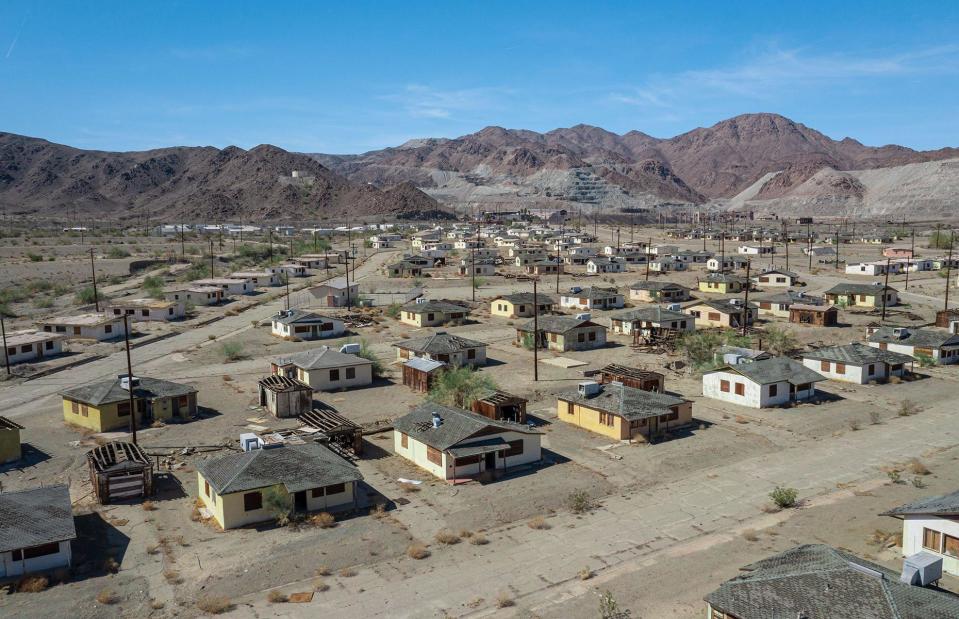
Wirestock, Inc. / Alamy Stock Photo
After the mine was shuttered, Eagle Mountain became home to an ill-fated low-security prison called the Eagle Mountain Community Correctional Facility, which opened its doors in 1988.
All of the town’s once-thriving community centres, including its café and bowling alley, were repurposed to house the 438 inmates who were serving time for nonviolent offences such as parole violations. However, all this was brought to an end in 2003, when a violent altercation broke out among the prisoners and two inmates were killed.
Eagle Mountain, California, USA
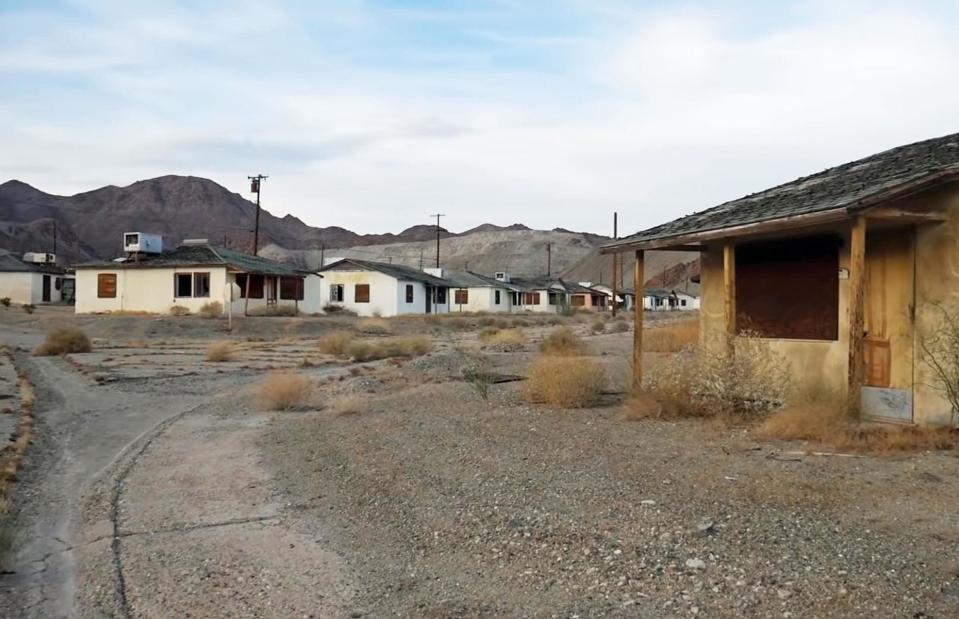
Trevor Costelloe / YouTube
In the years that followed, plans for the town's redevelopment came and went, leaving the settlement to fall into further dilapidation.
While void of residents, Eagle Mountain has drawn the attention of local urban explorers and photographers. One of the intrepid adventurers who has taken a tour of the forgotten town is YouTuber Trevor Costelloe, who captured this image of one of the community's residential streets.
Eagle Mountain, California, USA
![<p>el-toro / Flickr [CC BY 2.0 DEED]</p>](https://s.yimg.com/ny/api/res/1.2/u2OJ_qvptxFVBcnwnYT7JQ--/YXBwaWQ9aGlnaGxhbmRlcjt3PTk2MDtoPTYxOQ--/https://media.zenfs.com/en/loveexploring_uk_835/3482836589f5a612abedae63f11e41ee)
el-toro / Flickr [CC BY 2.0 DEED]
However, the future of this forlorn outpost may finally be looking up. In April 2023, Eagle Mountain and its mining rights were sold for $22.5 million (£17.7m) to a mysterious buyer linked to a company called Ecology Mountain Holdings, according to SFGate. The firm, which hasn't revealed its plans for the vast property, appears to deal with auto parts and recycling.
It's unclear what the next chapter holds for this forgotten Californian outpost. Here's hoping the desert site will be revitalised one way or another.


